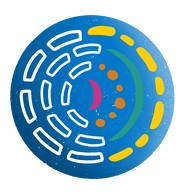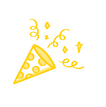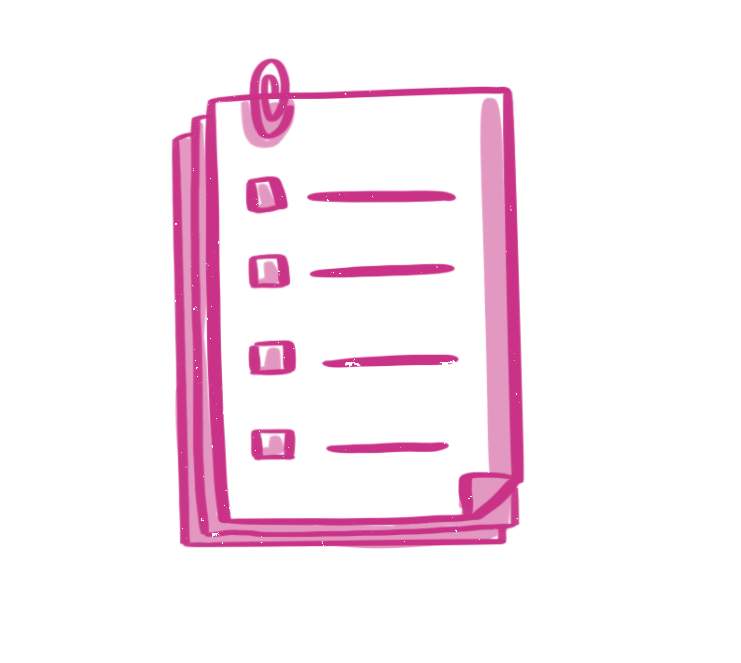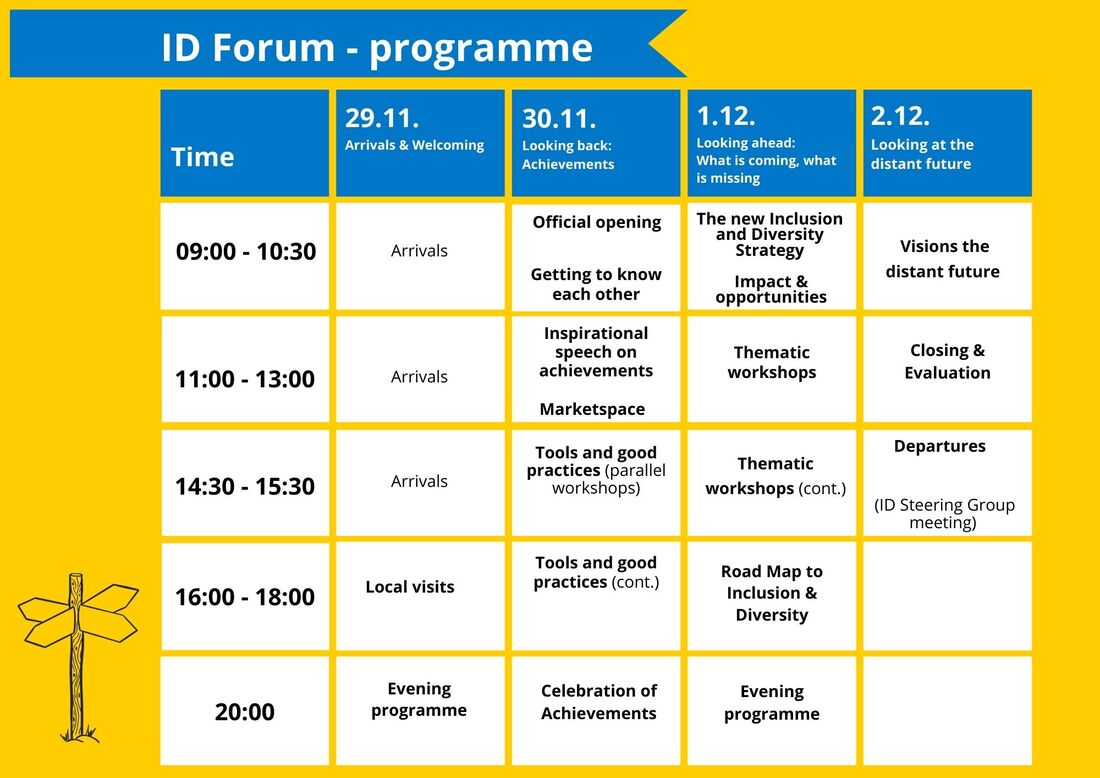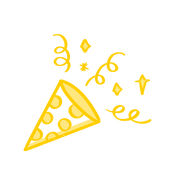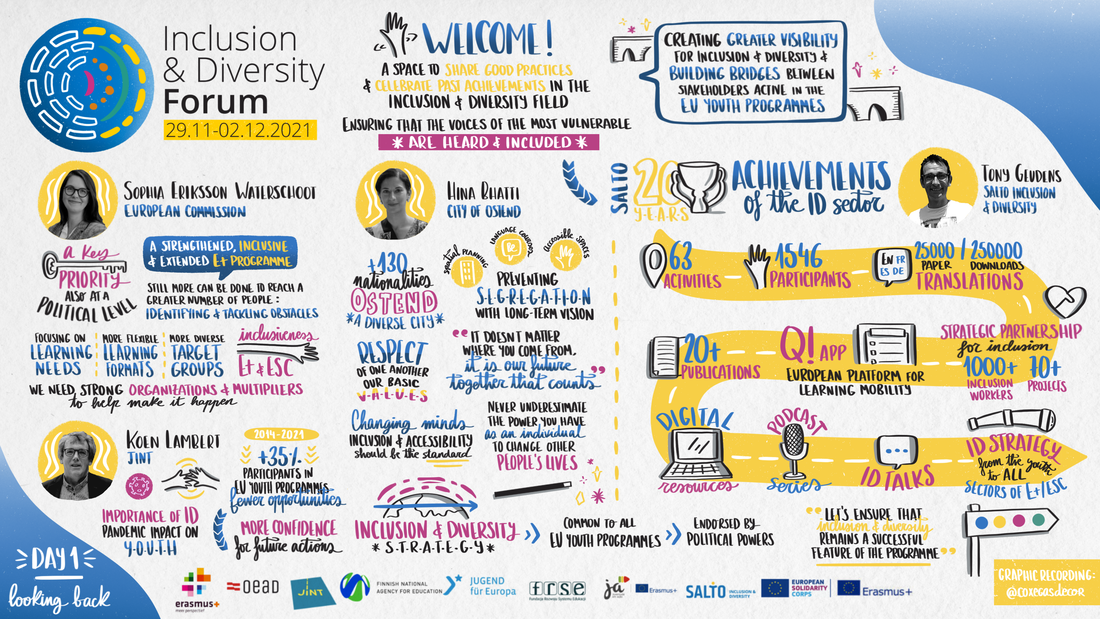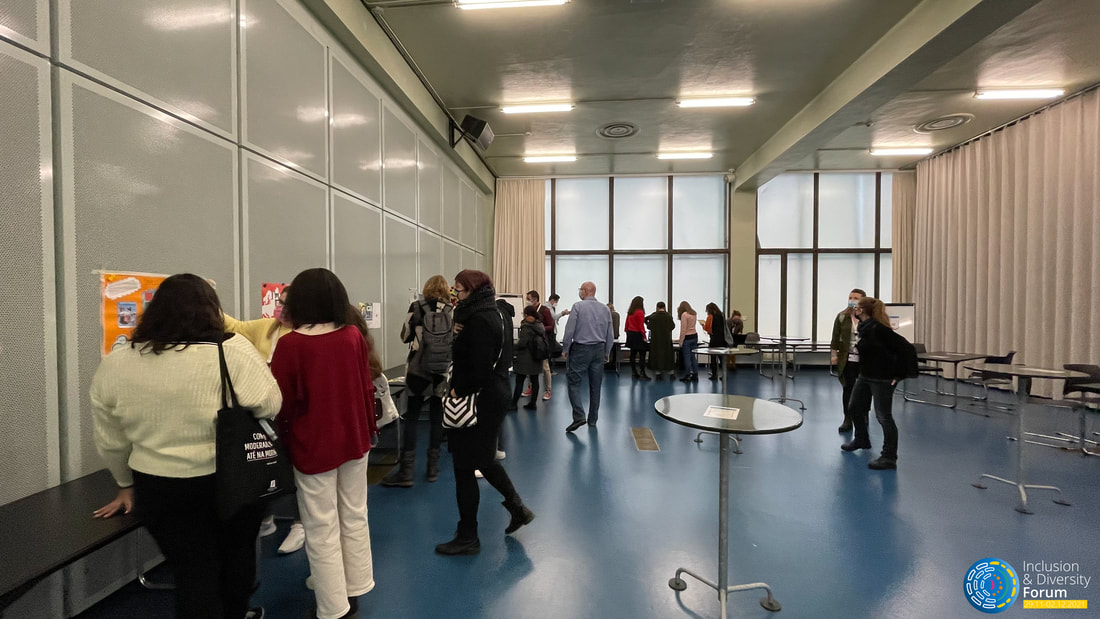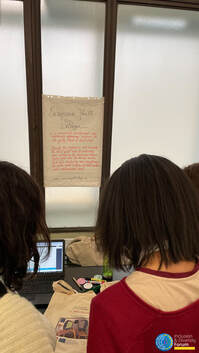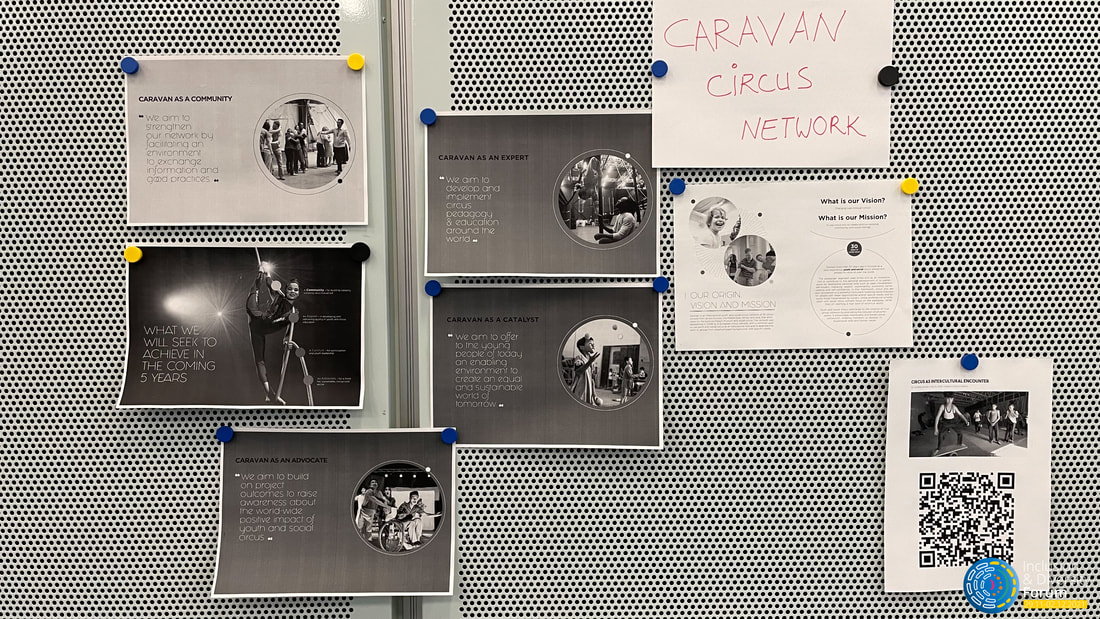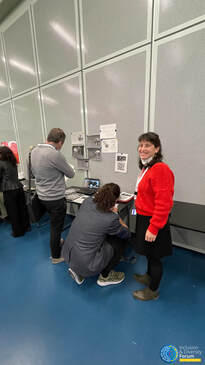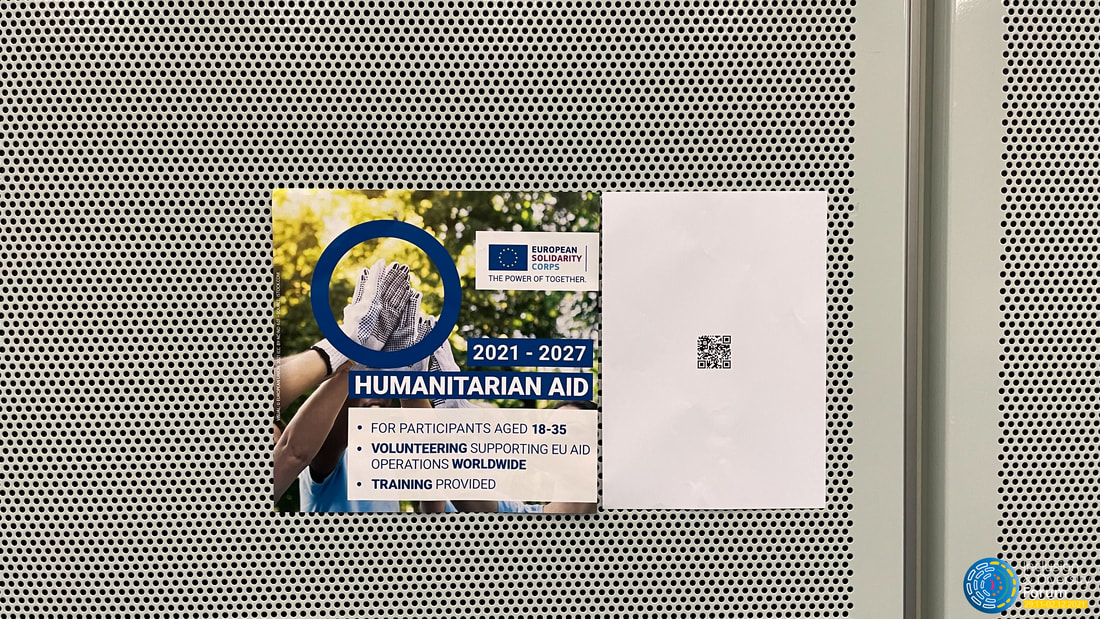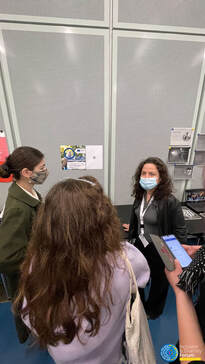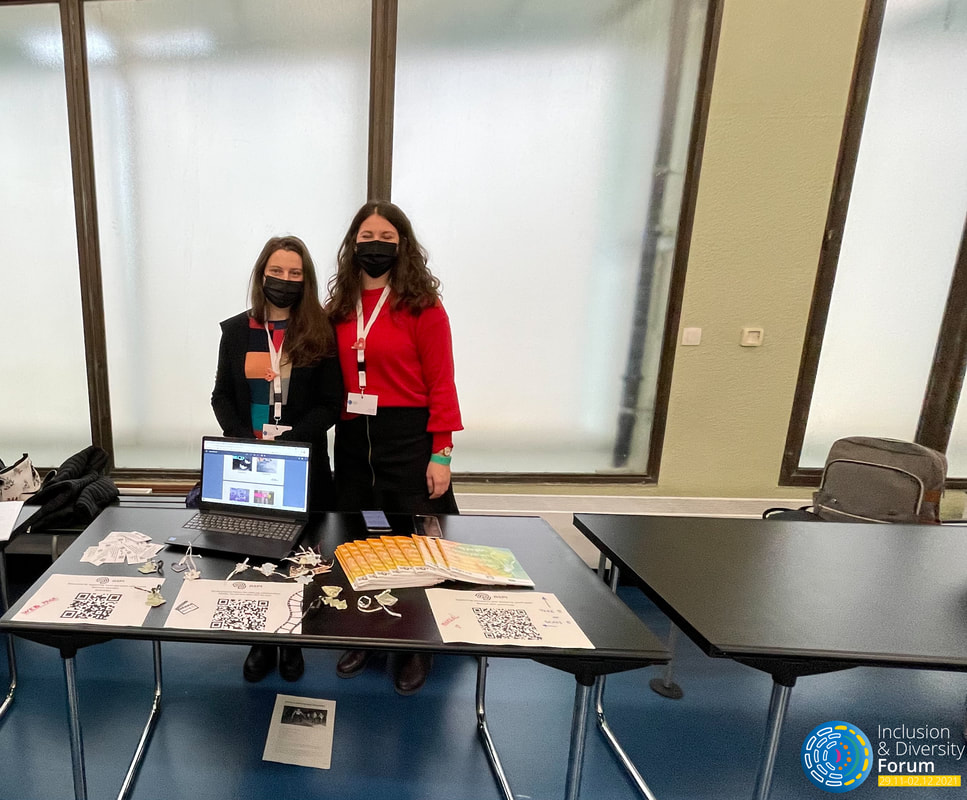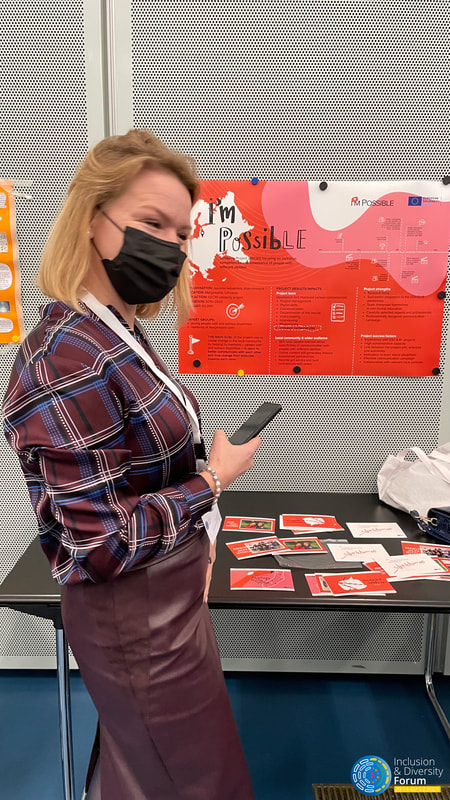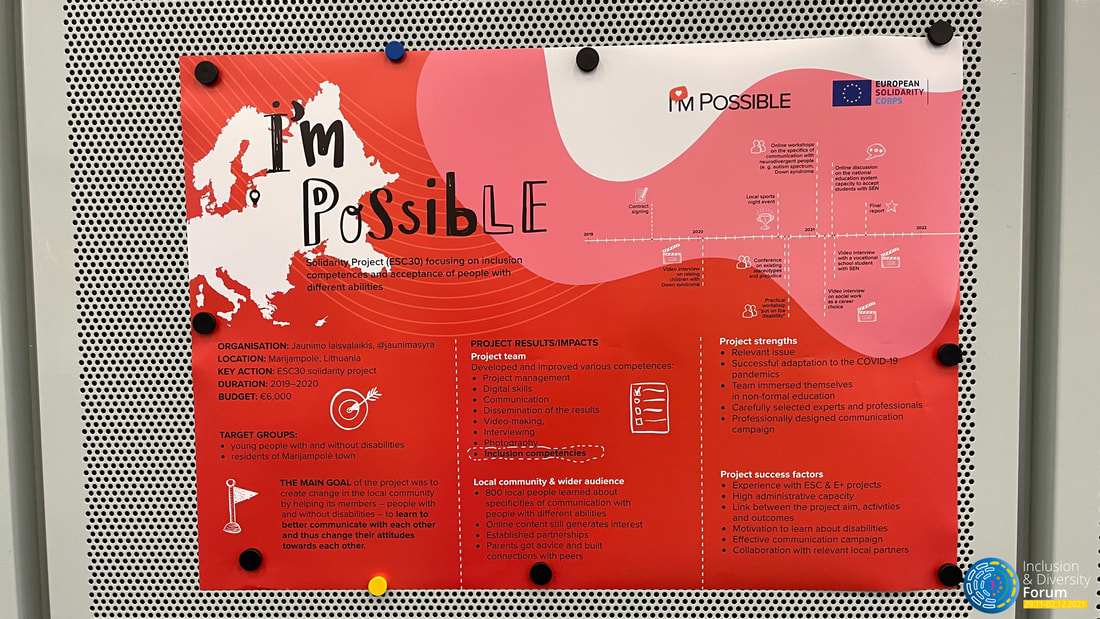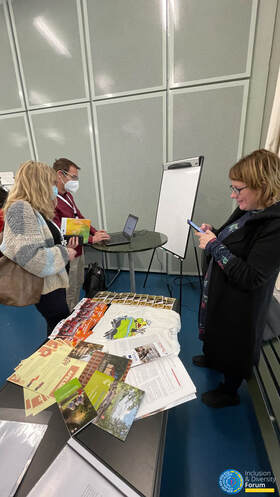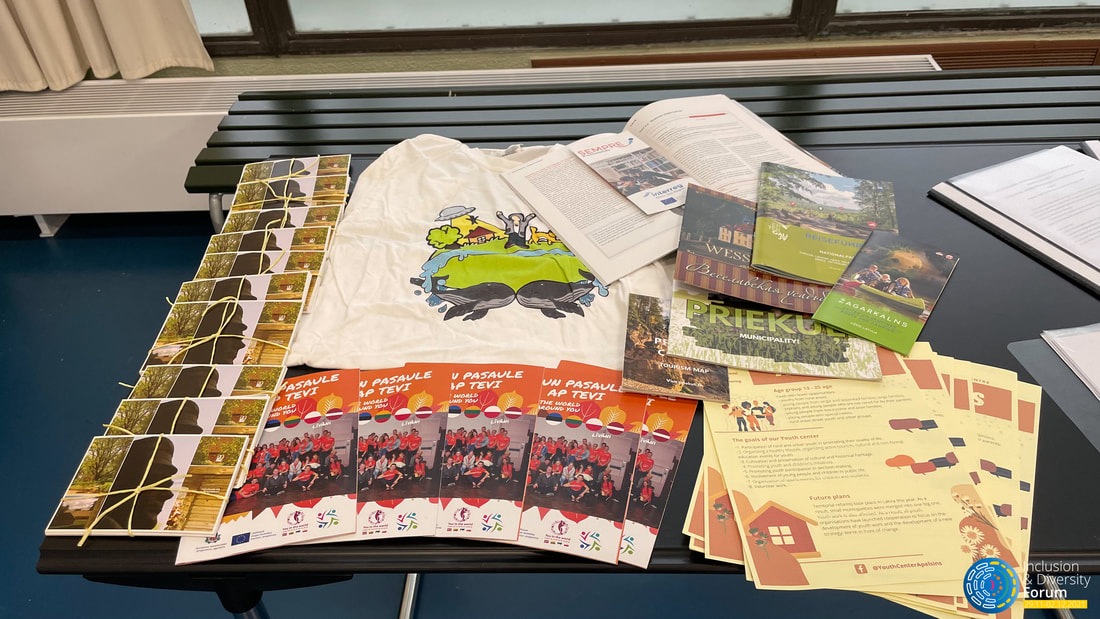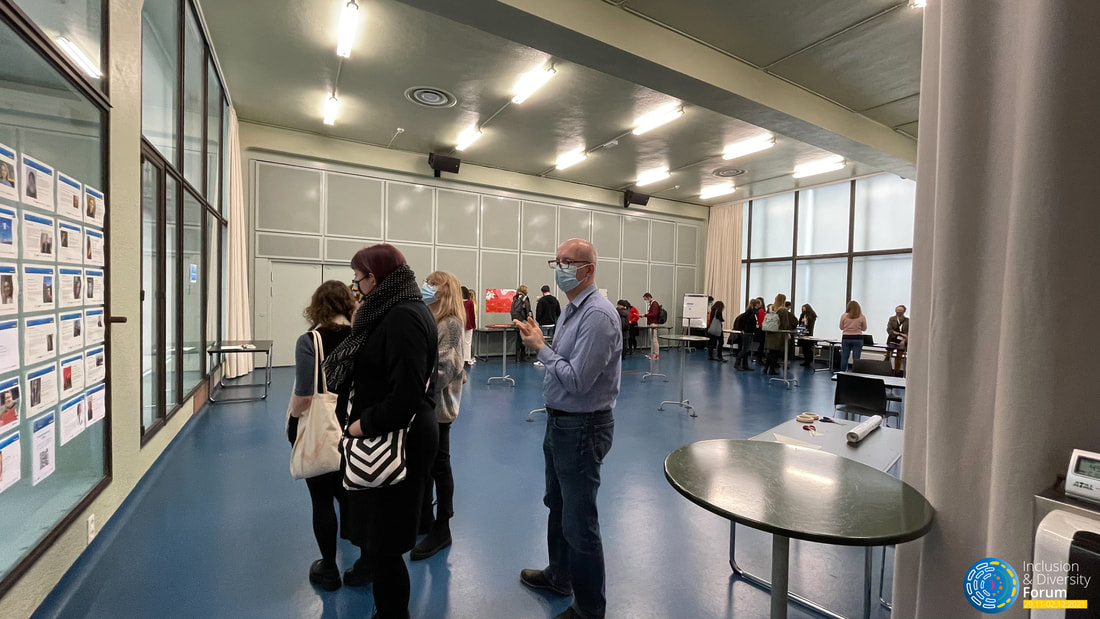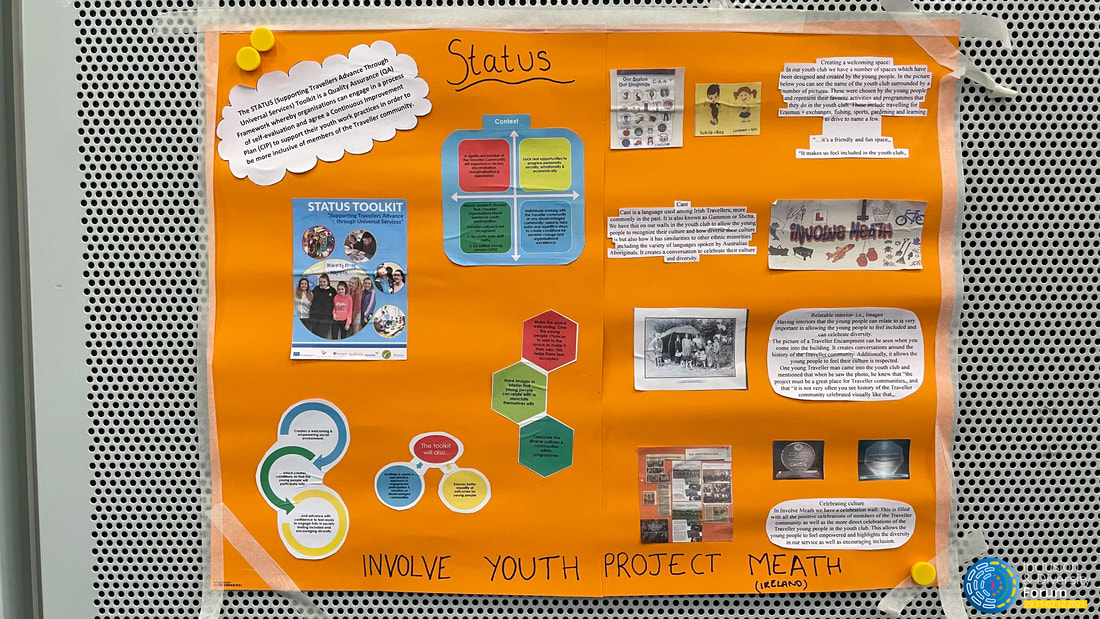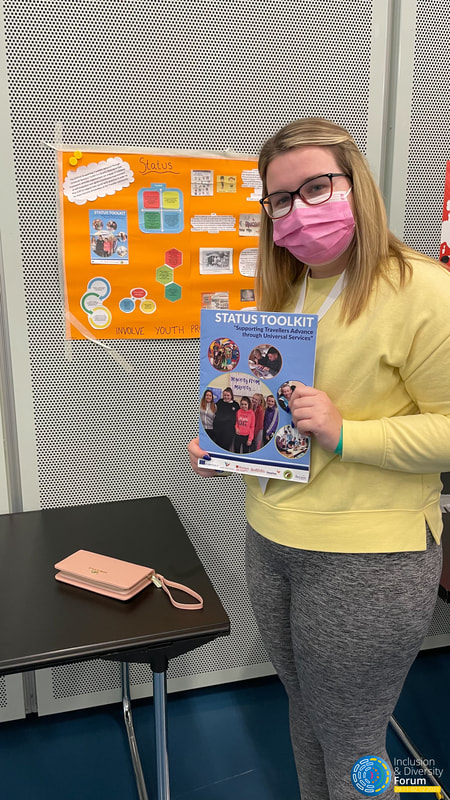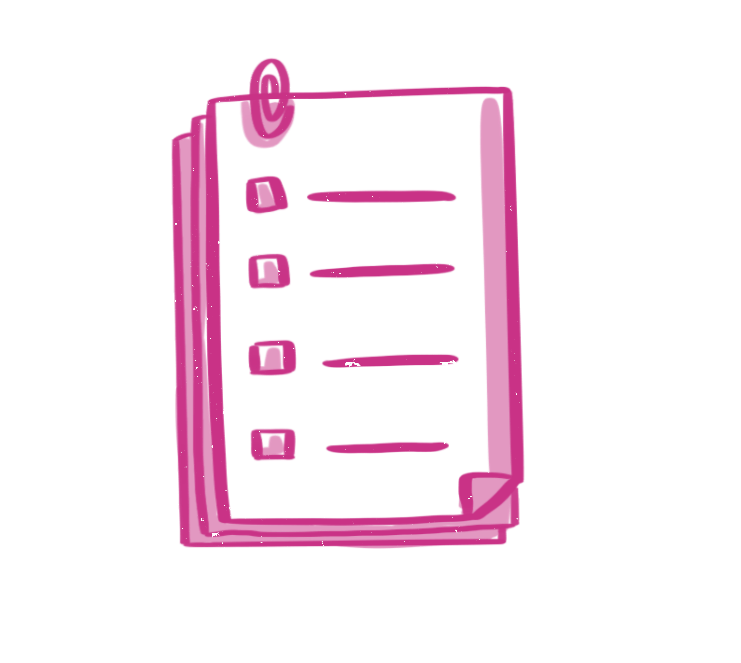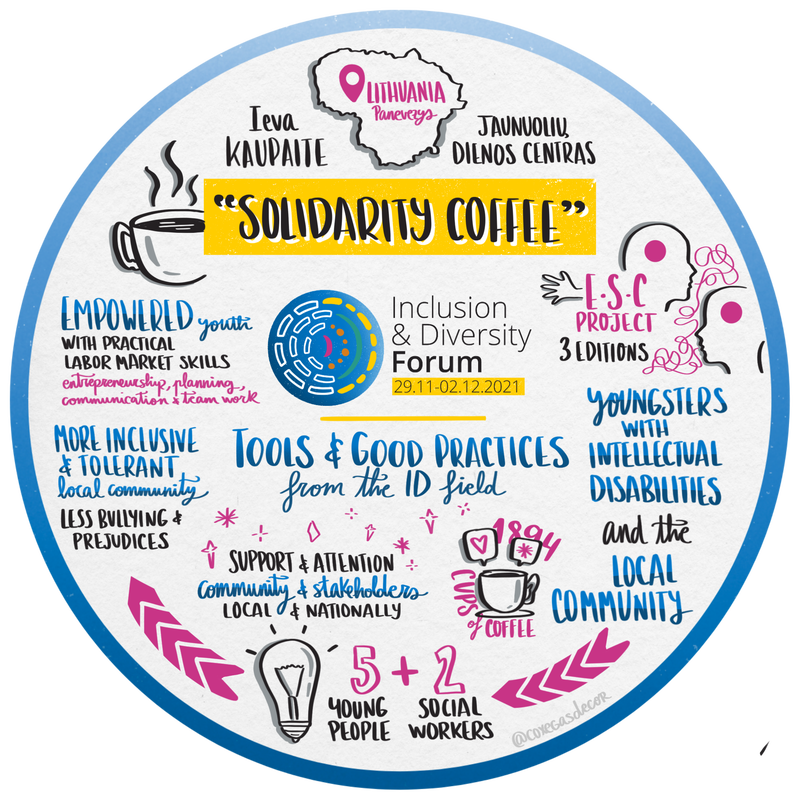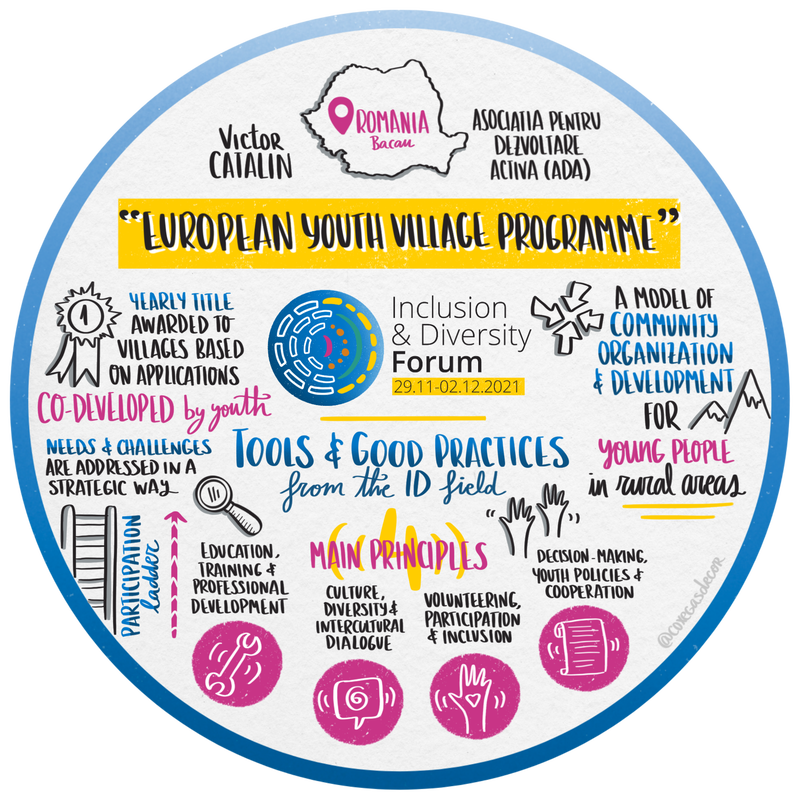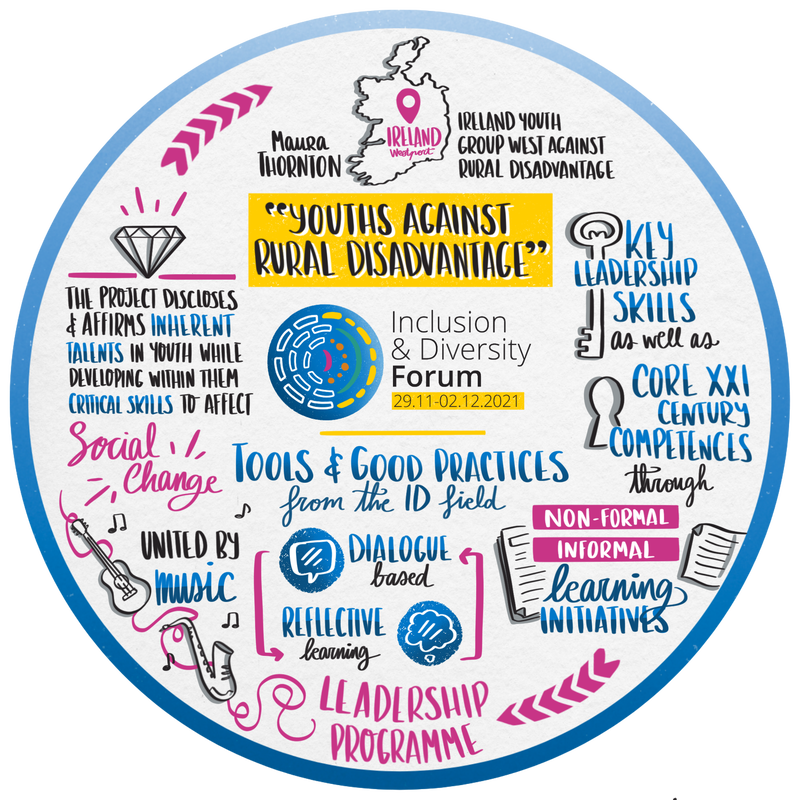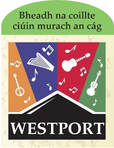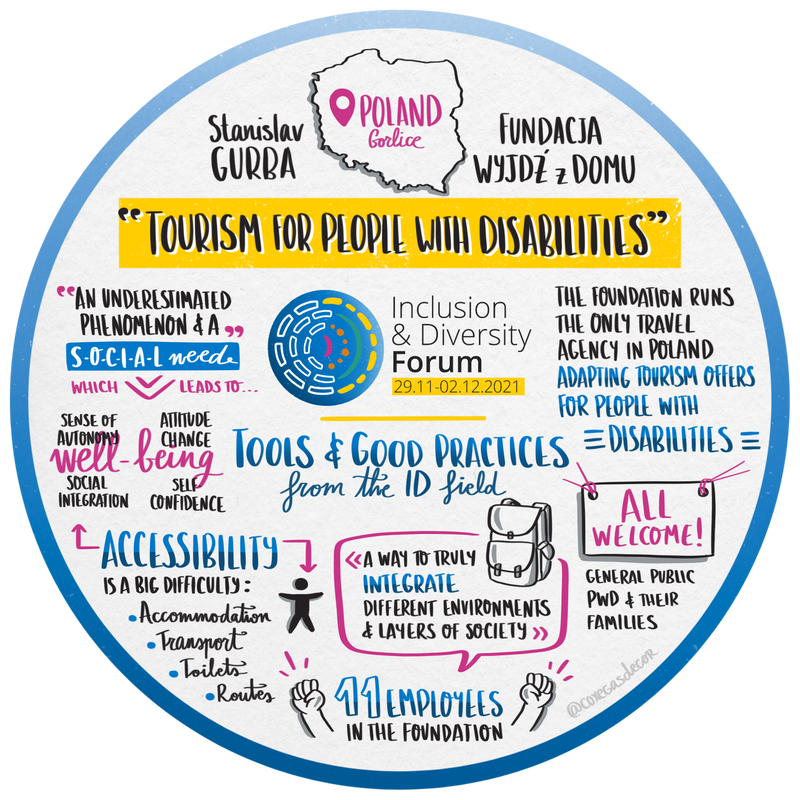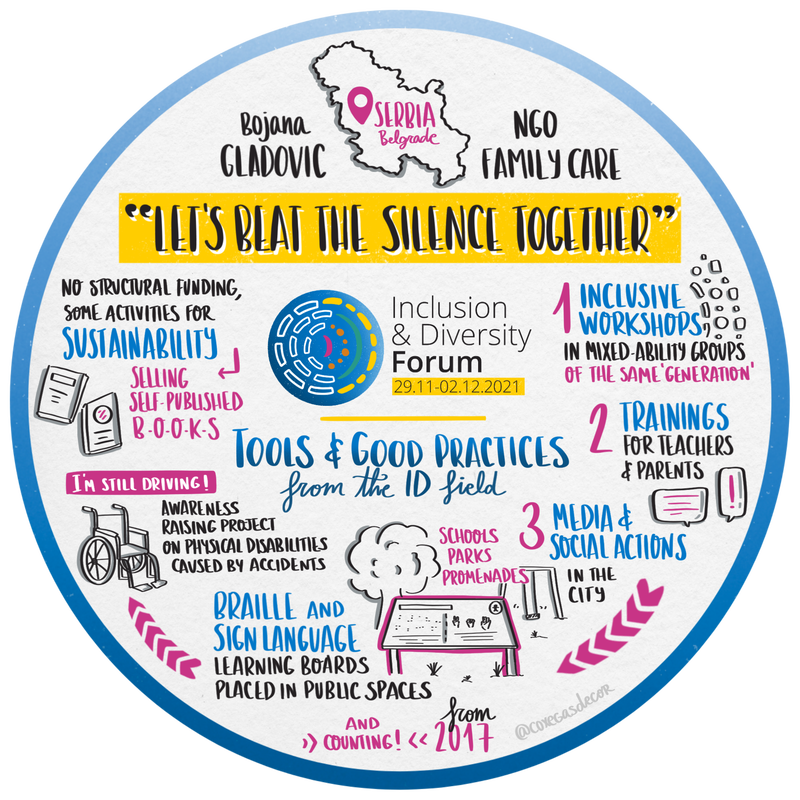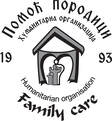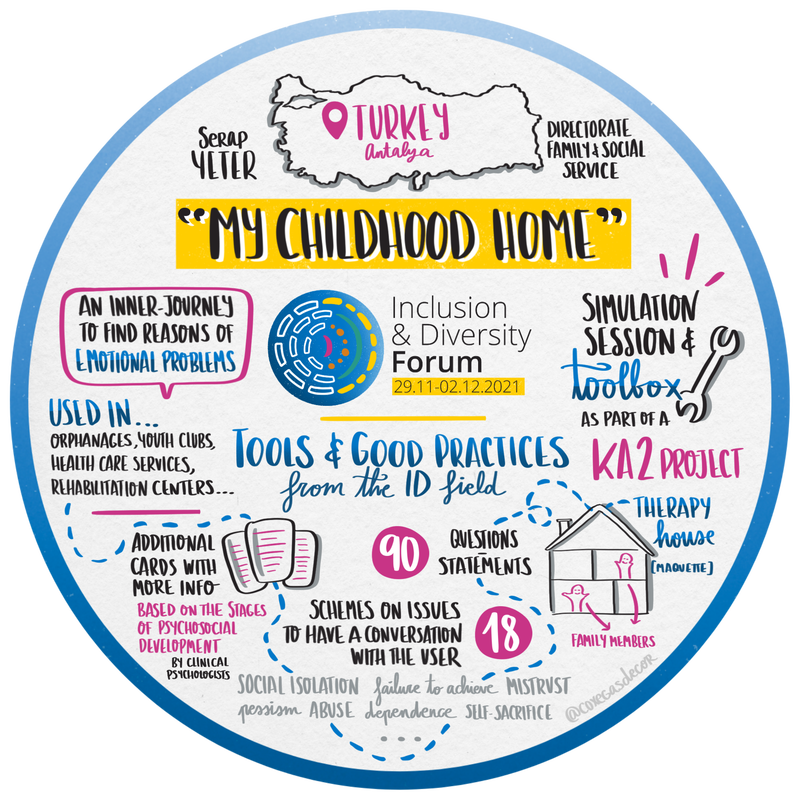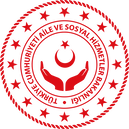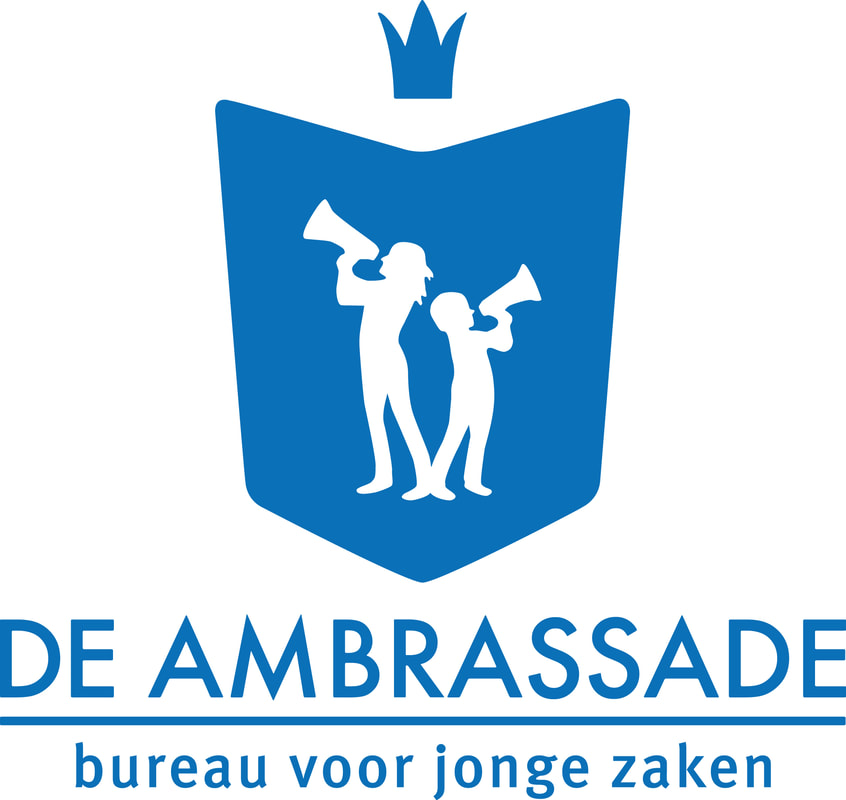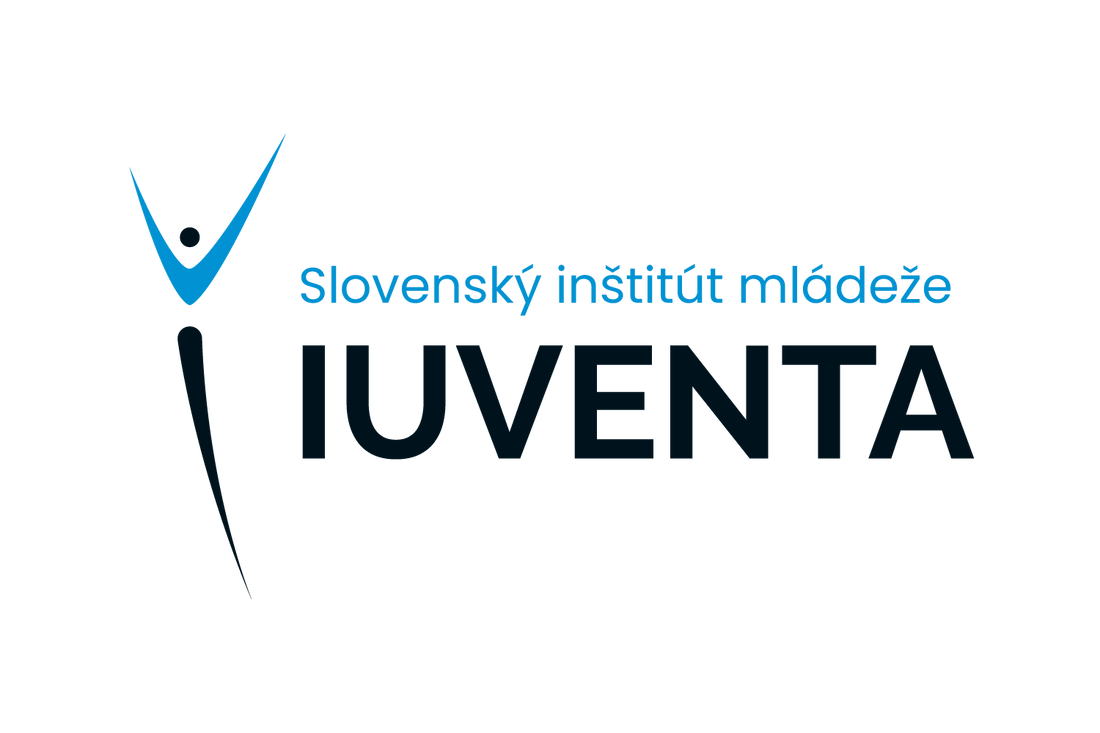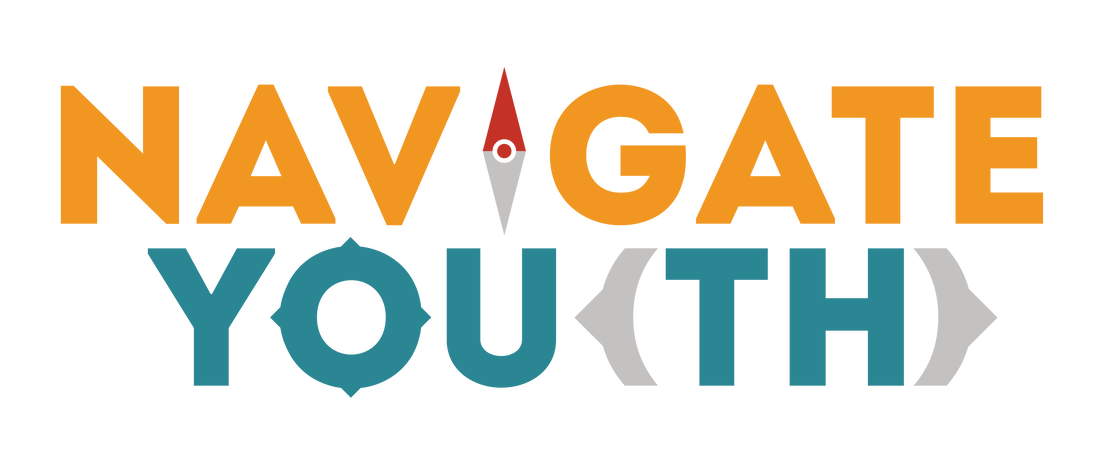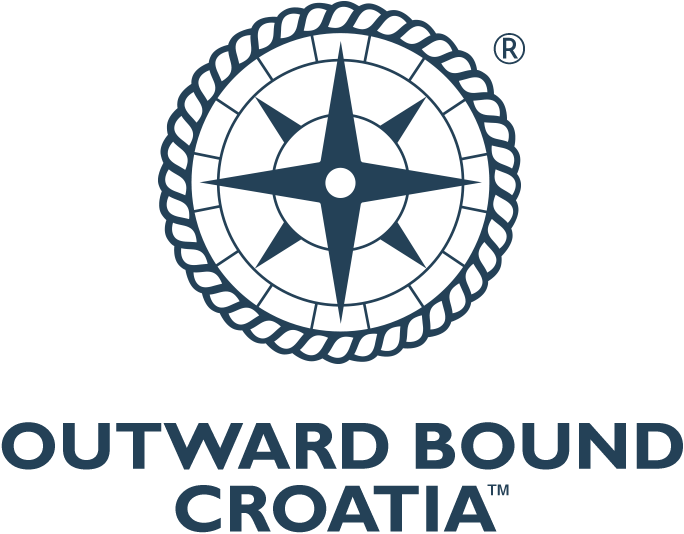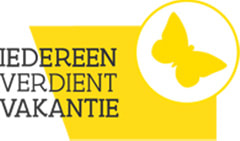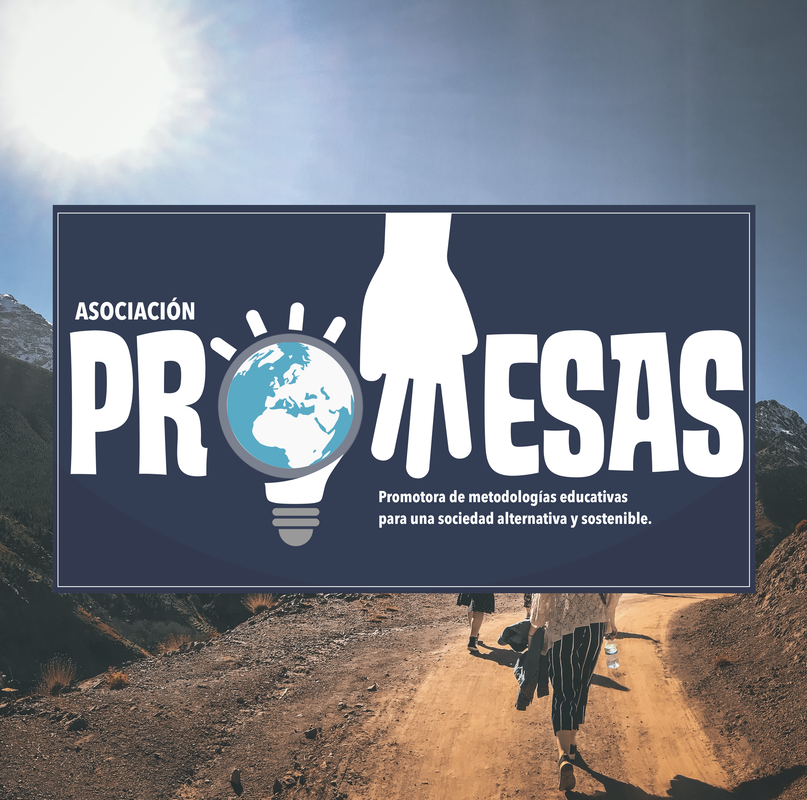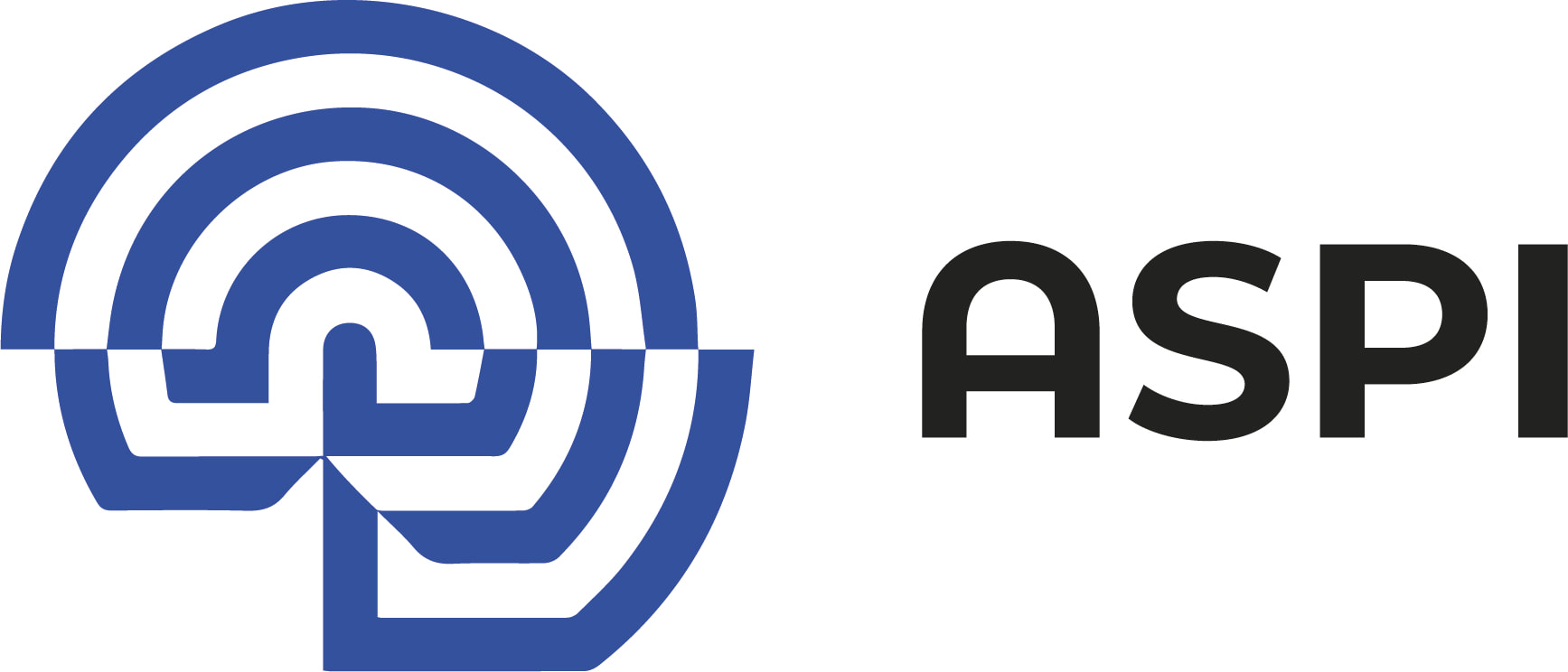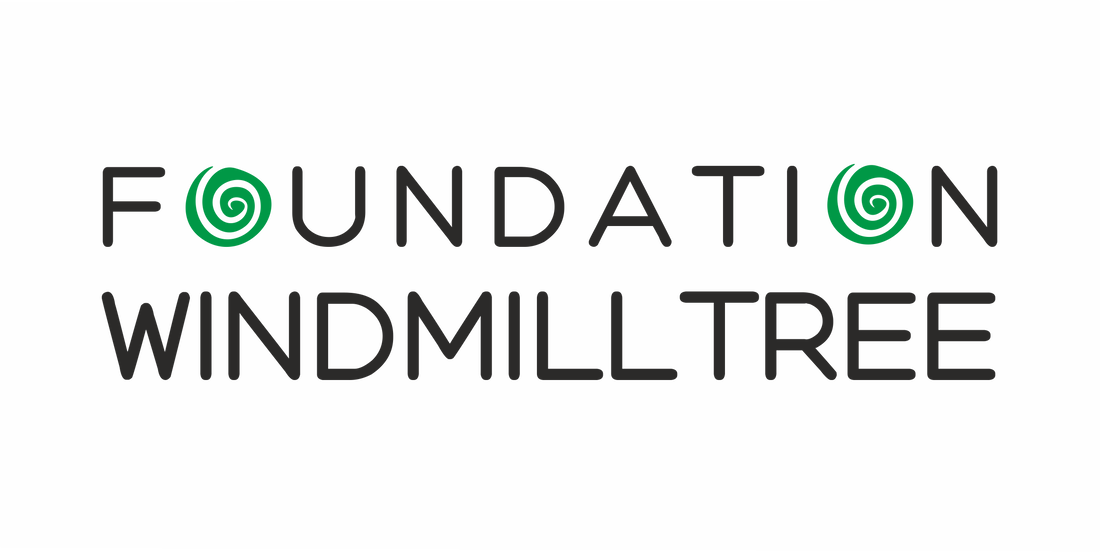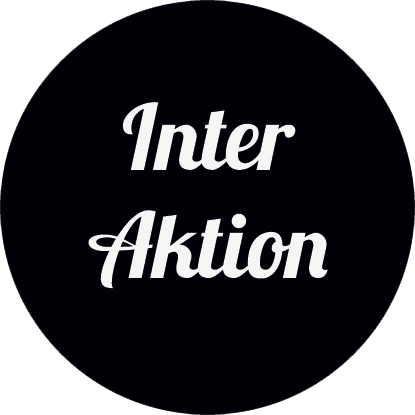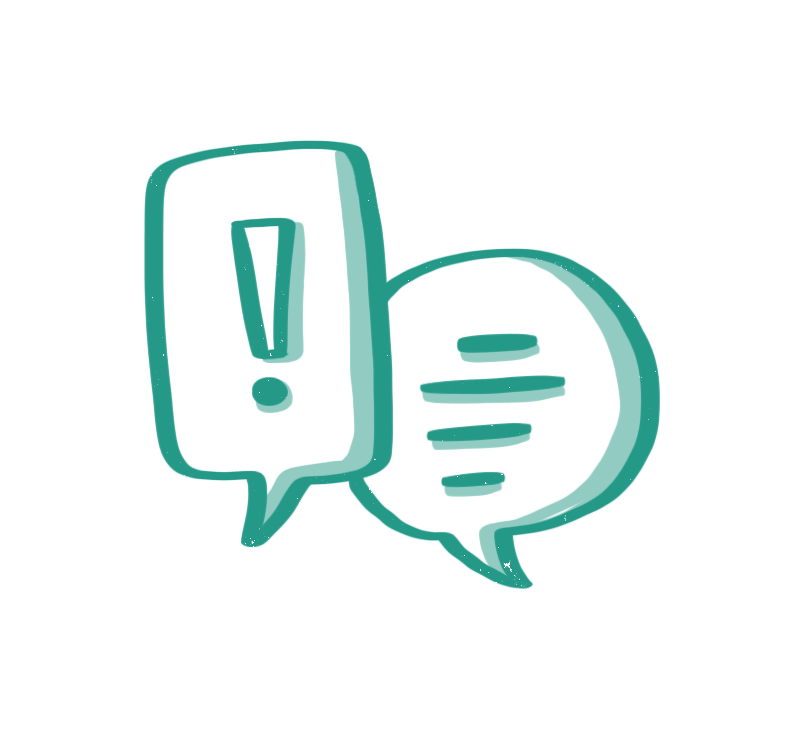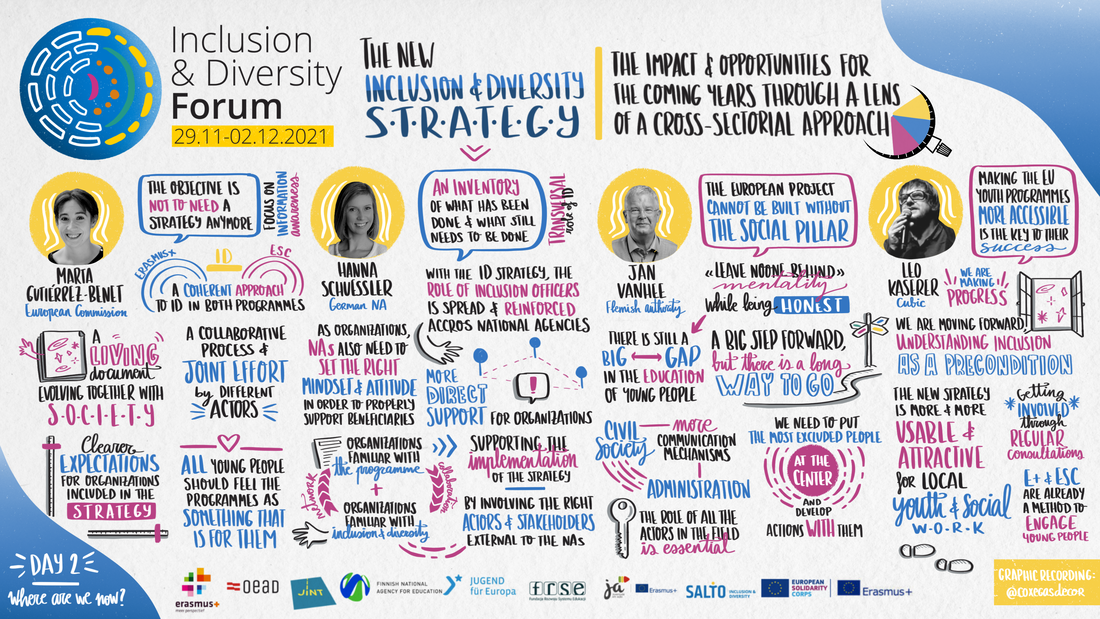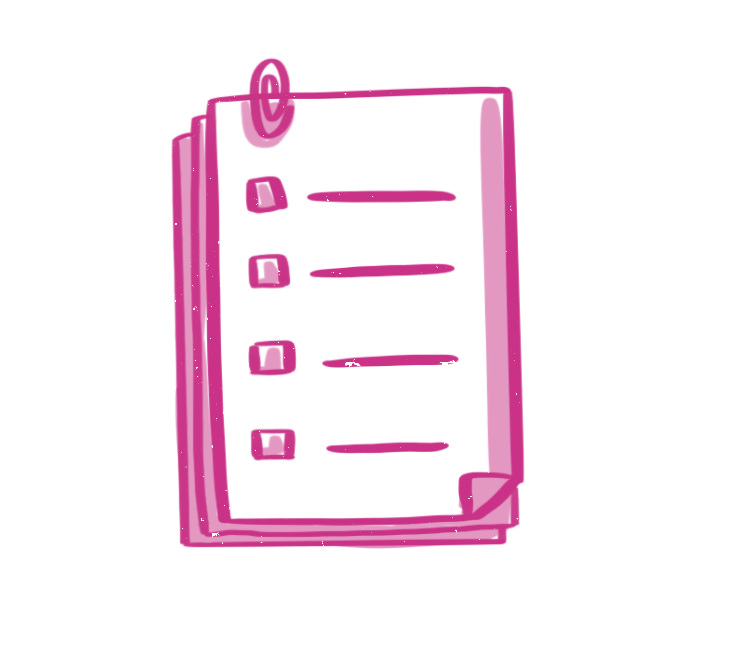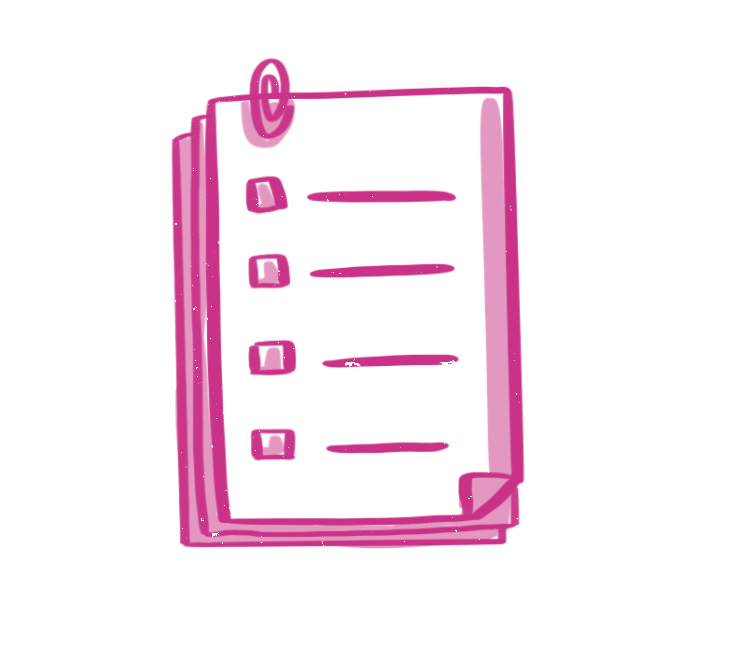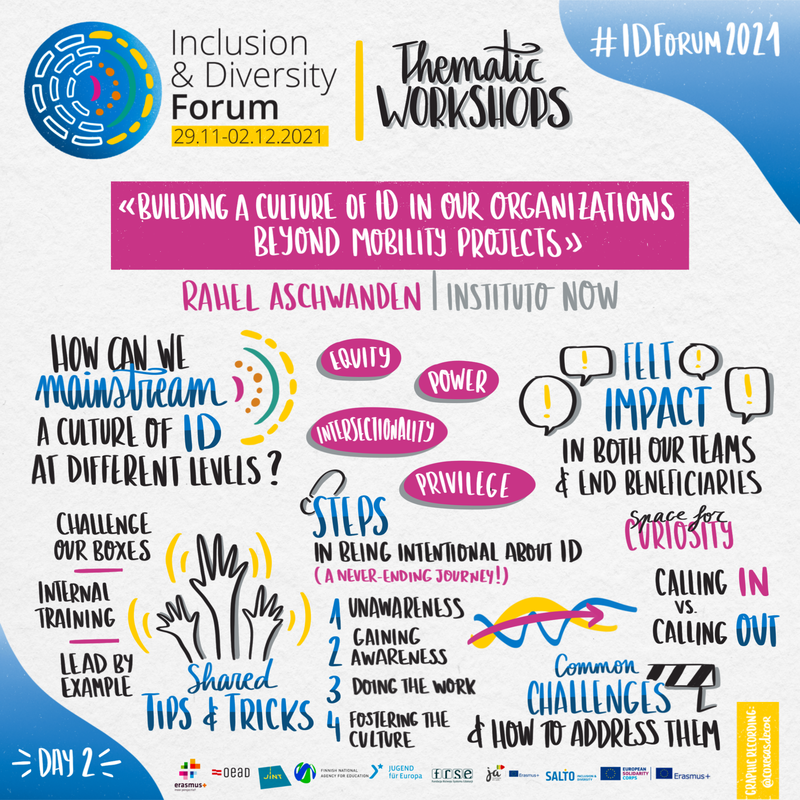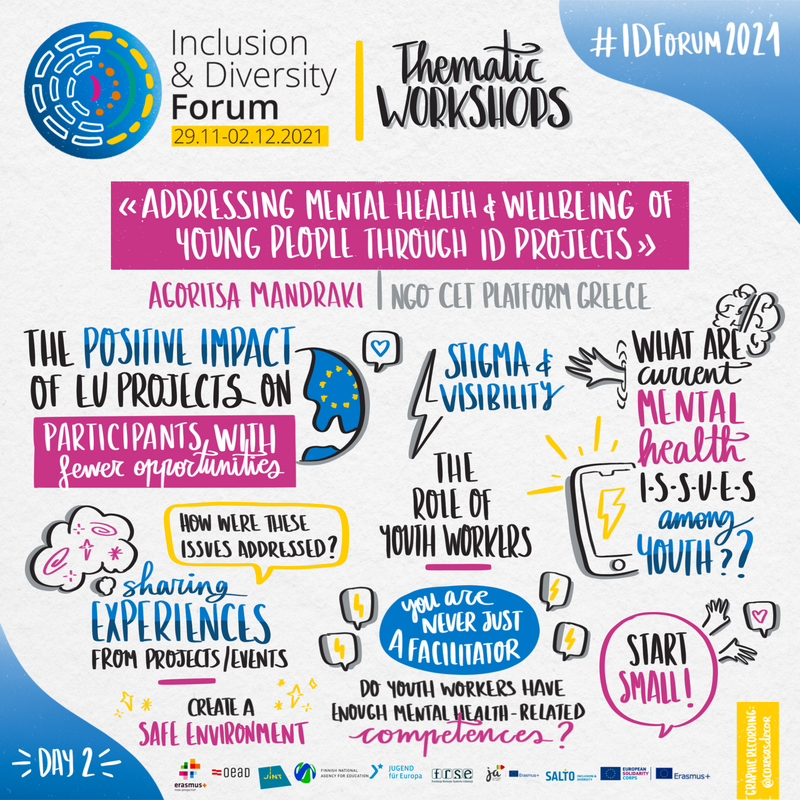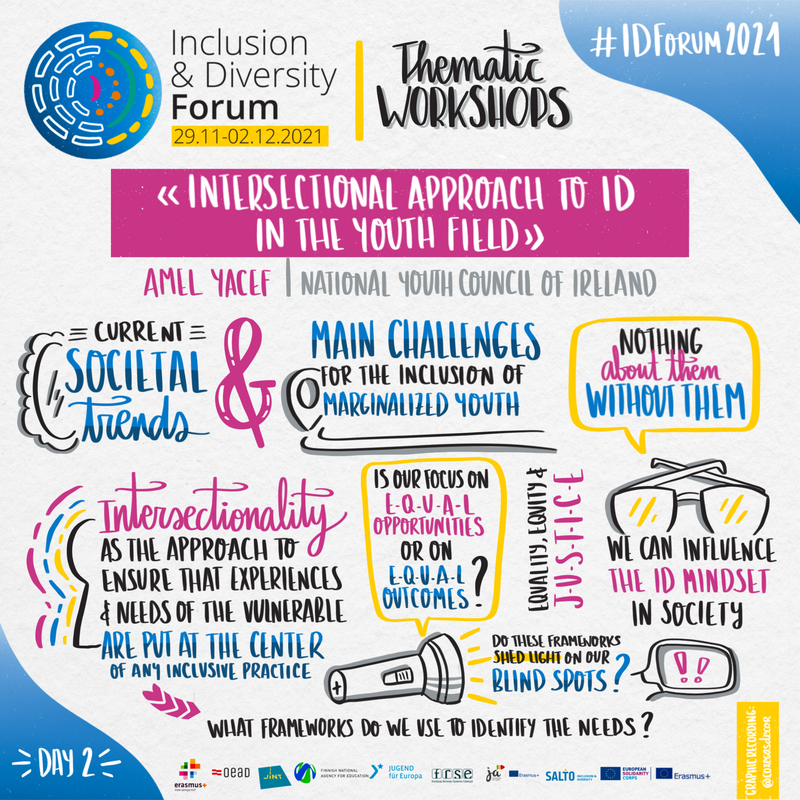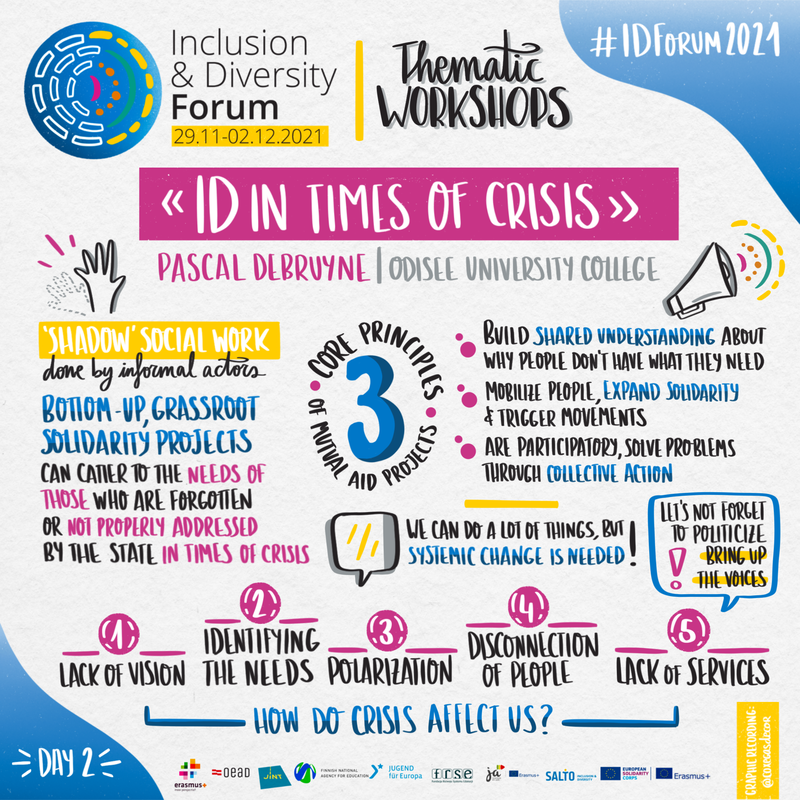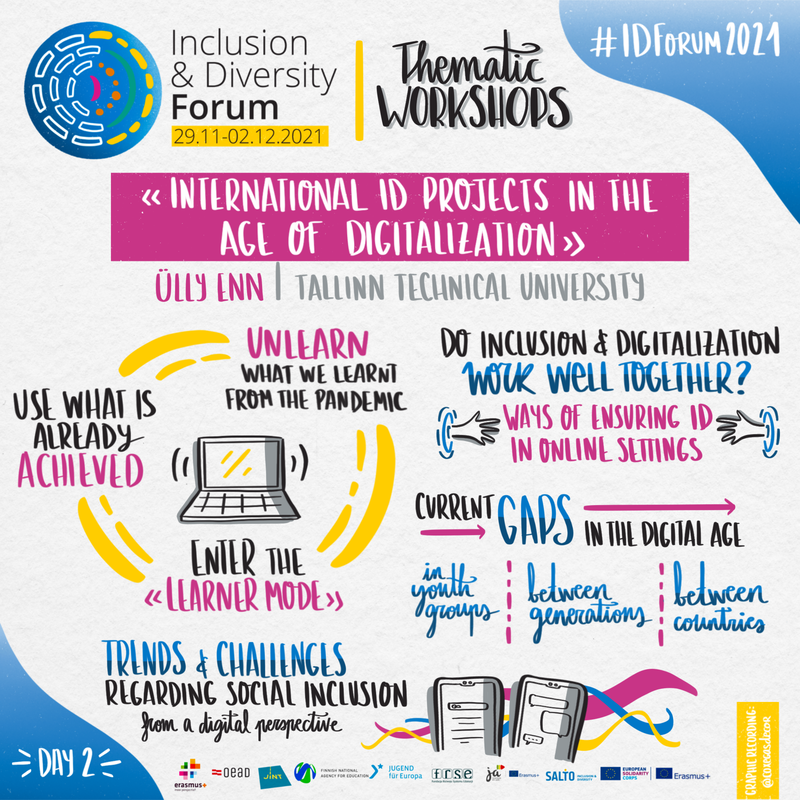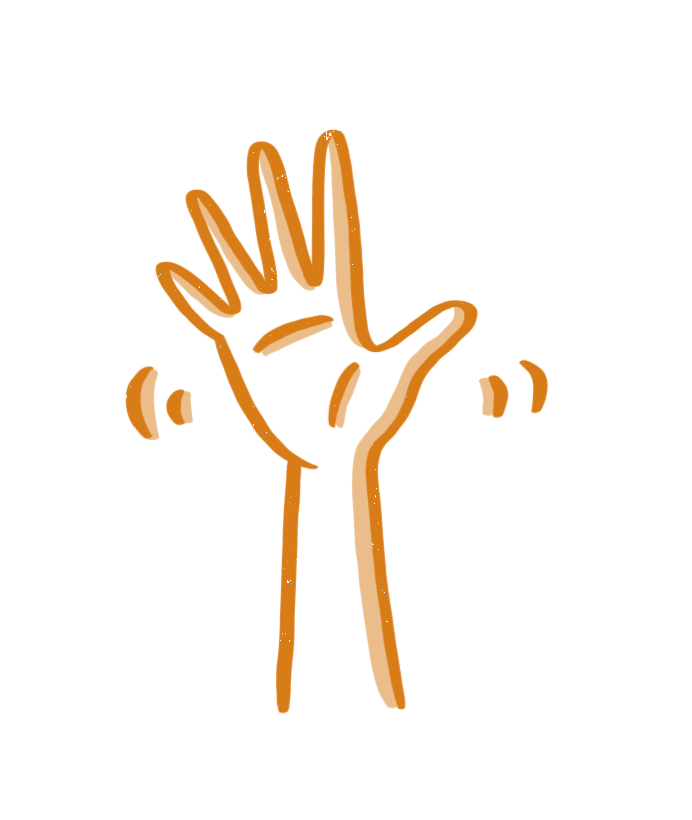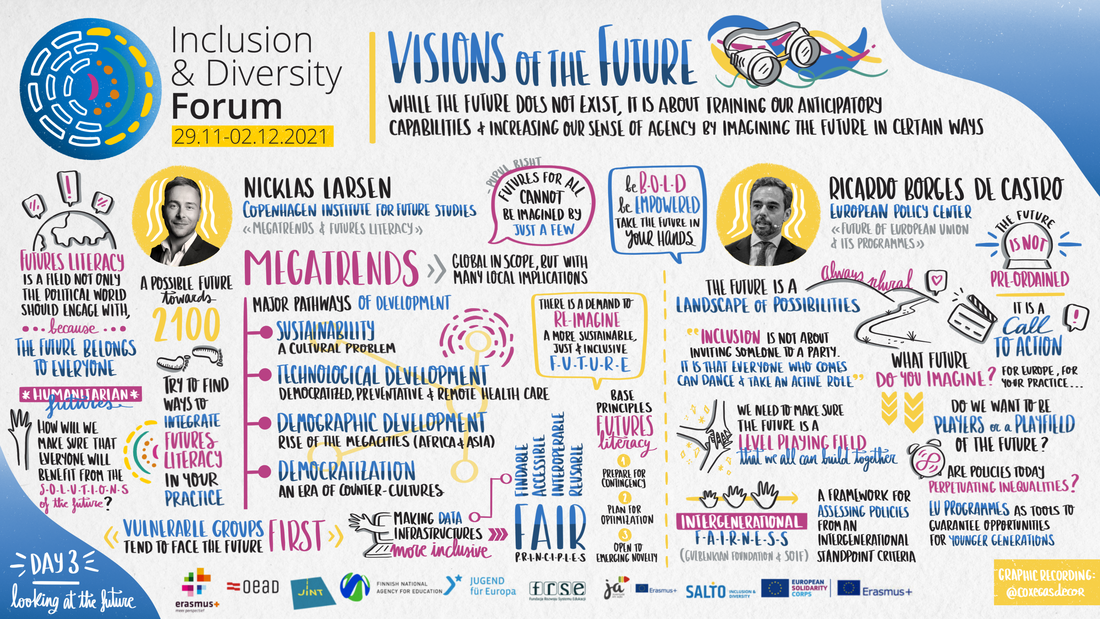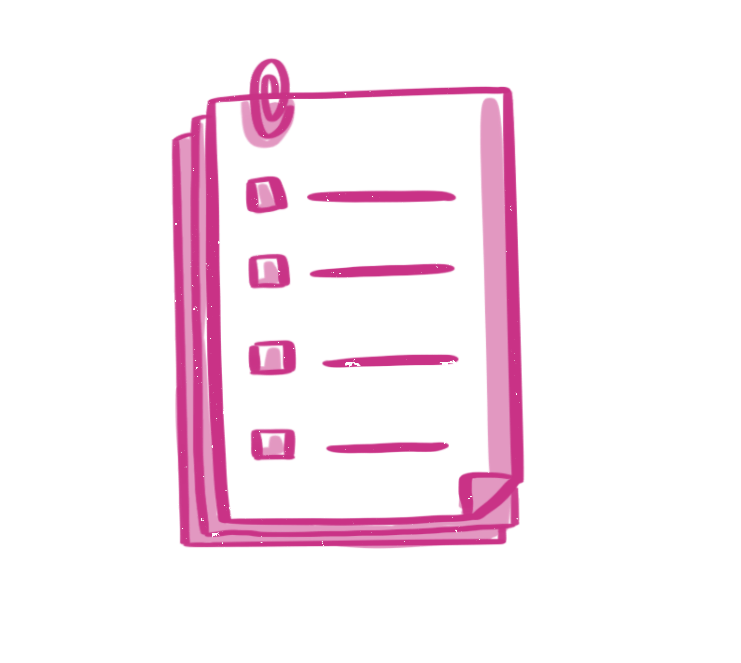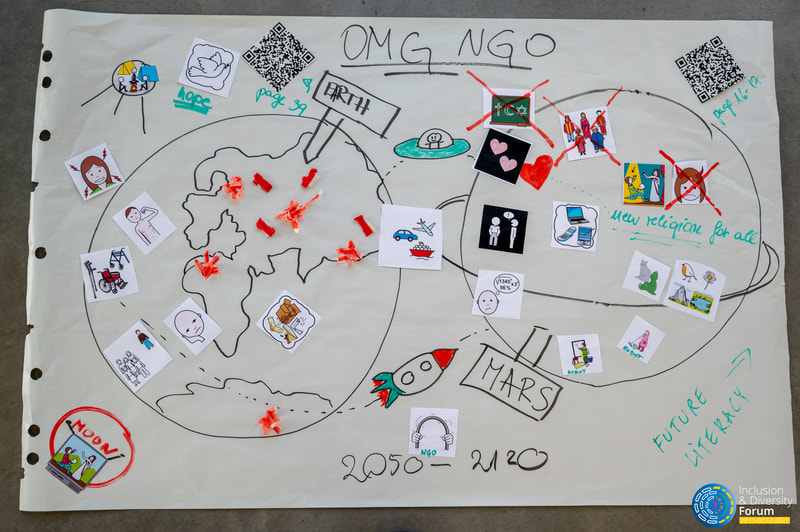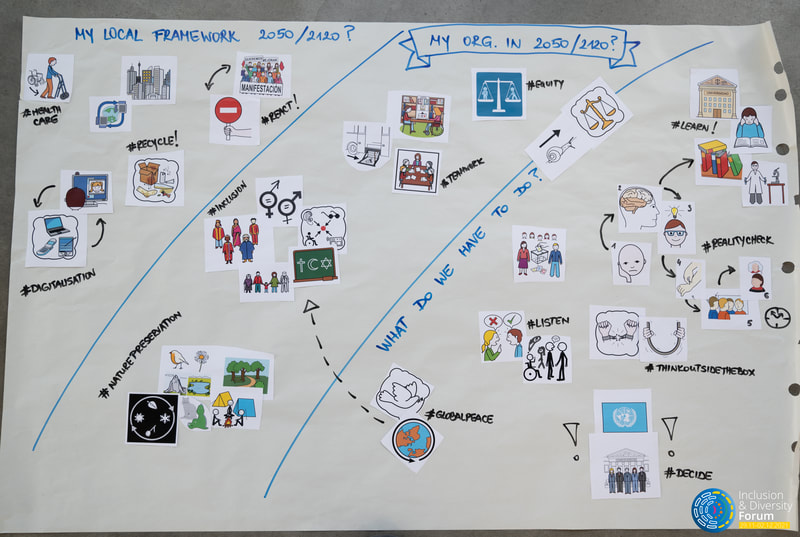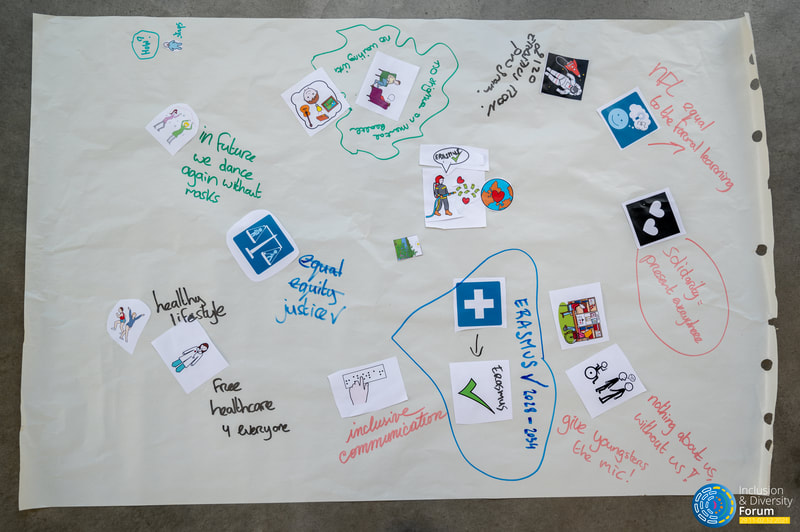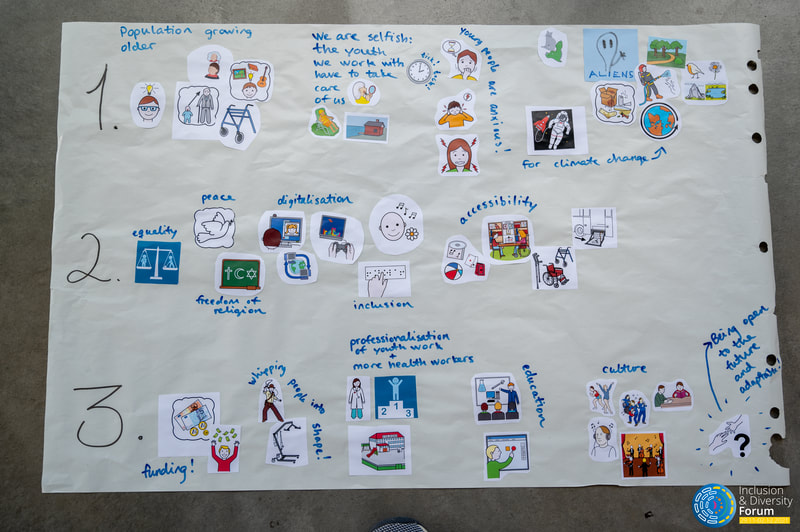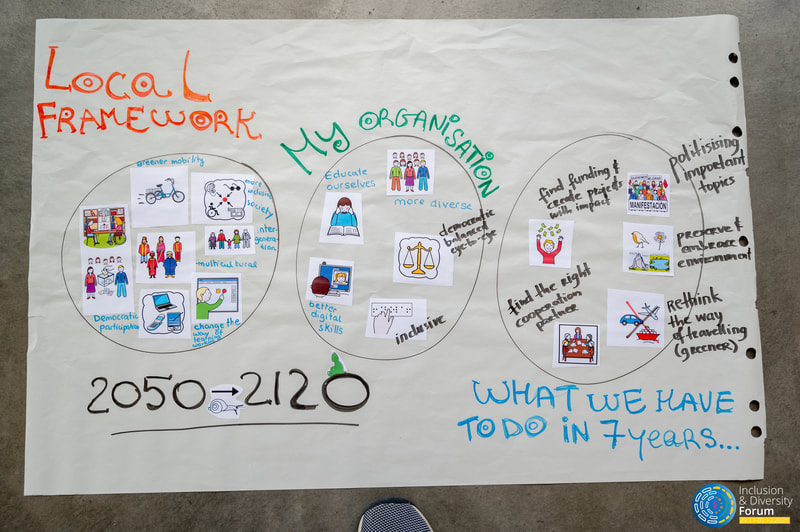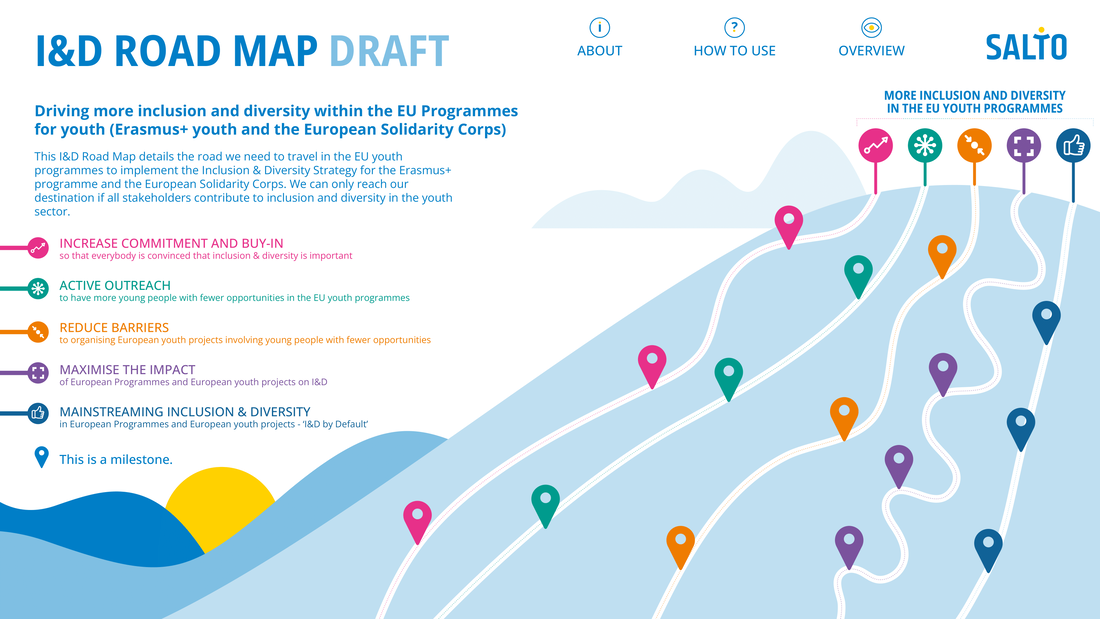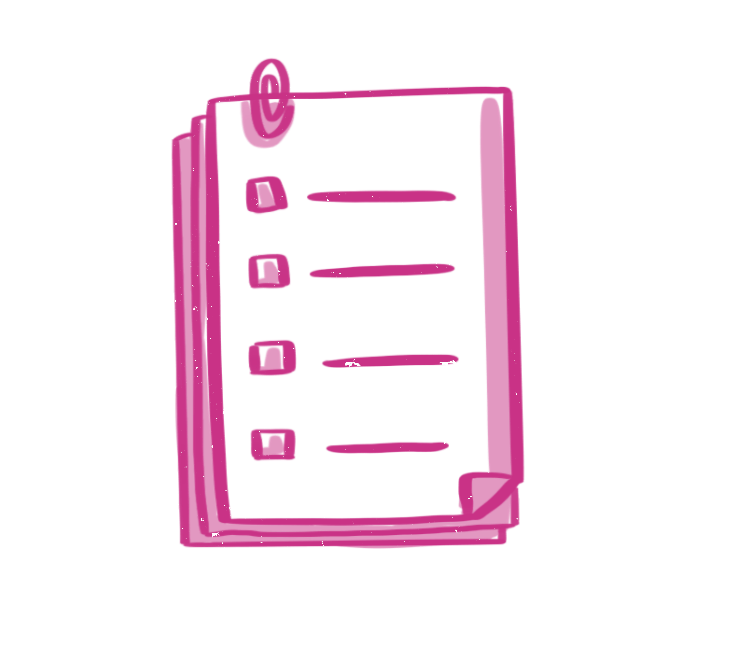Agenda & ObjectivesThe #IDForum2021 resorted to participatory methods to bring concrete examples, share tools, practices, and experience the local realities.
The Forum offered several opportunities for participants to interact and contribute to the #IDforum2021 objectives: |
<
>
Official opening and past achievementsOfficial Opening
Inspirational Speech
Marketplace of good practicesOutward Bound Croatia, Zagreb
For whom? Economic obstacles, Social obstacles, Geographical obstacles European Youth Village (Romania)
Caravan Circus Network
European Commission
Association for supporting Youth and Adults with Autism Spectrum Disorders
Jaunimo laisvalaikis, Marijampolė
Cesis municipality, Priekuli association Youth center "Apelsins"
Youth Up North, Boden municipality, Sweden
Involve Youth Project Meath Ireland
Good practices sessions
R1.1 Solidarity Coffee
Session report ESC project, started in 2019 by an organisation working with young people with intellectual disabilities and resulted in 3 SC projects. Coffee is made by young people with intellectual disabilities wanting to be more involved and visible in the local community, to break out of isolation. It was their idea, and they asked for help with the application, training on preparing coffee with machines, teamwork, working with clients, etc.. As a result, people from the 1st SC project acted as mentors for the ones in the 2nd & 3rd. Impact Project 01: - 1052 cups of solidarity coffee, - improved skills of YPWD, - their dream became true, - generated a new solidarity coffee project - follow up, - followers on social media & national media coverage, - award for best youth project and best youth worker of 2020, - put the town on the map, as people from other cities started coming. Project 02: - 842 cups of coffee; - partnerships in different youth initiatives - and a new idea for coffee bike project. Coffee bike project: - A better way of spreading ideas, greater visibility, - more mobile, 200 km, - 200 people reached and - employment opportunity. In 2021 SC 3 was born. Planning to involve also other young people with disabilities and with limited chances for employment. Main challenge(s)? - Because of Covid-19, they could not attend the events, so instead, they did online courses for other young people on how to serve coffee or implement similar projects; - Urban infrastructure developments: made it difficult to serve coffee on the street - moved to doing events; - Declining motivation, young people were tired - got vacation for the regular SC team. Main learning points - Know how: make best coffee, work as a team, dress properly, serve clients. - Attitude in the town towards YPWD changed a lot. - The community feeling increased. - Young people with disabilities felt empowered. Questions & answers Is it possible to repeat/get funding the same solidarity project? Yes, if it gets more new people on board. Other remarks Ideas for the future given by participants from the workshop: expand to the capital, home delivery, make social business out of it, making and roasting own coffee beans, involve other target groups, invite local artists, make solidarity gifts, organise youth exchange; cooperation with Starbucks, start cooperation with hospitality schools, those who were involved in SC1 & 2 could pass their knowledge to students of those schools. This would also be good for their self-esteem and skills development. R1.2 EUROPEAN YOUTH VILLAGE PROGRAM
Session report A lot of youngsters still live in rural areas. If they want to go to highschool, sometimes they have to wake up at 5 o'clock and they are back very late in the evening. So, there is no time to do any activities, for example, volunteer work. There also no activities for youngsters in the rural areas. Transportation is difficult and, eventually they move to the city when they are 18 or older. Young people from rural areas are often forgotten, left in the dark. So, they want to give them a voice. Impact The project was born out of frustration. They aim to offer a positive model of community development of young people in rural area, which can be replicated at international level. They want to give them a voice, and make sure that youth movements are formed. The title is given to the villages or rural communities who make a real change in the youth life. A nice example is Suscot 2019: they supported the youngsters to fill in the application, help them to find the right channels. It gives the youngsters more self esteem. the project included Movie Days, treasure hunt, workshops, festival, participation local consult meetings, music, sports activities, environmental awareness campaigns, winter festival among others. Main challenge(s)? How did they find the youngsters who wanted to participate? They went to a school and had a meeting with the principal. He forgot to inform the pupils, so there was no meeting. But they didn't leave it like that. They went from door-to-door, and so it grew organically. An informal network of young people was born. Main learning points Don't forget youngsters from rural areas! Questions & answers Does the organisations give grants? No, but they show them the way to get them. Other remarks https://europeanyouthvillage.eu/ R1.3 YOUTHS AGAINST RURAL DISADVANTAGE: IRELAND WEST
Session report Maura Thornton developed a Leadership Program on the West Coast of Ireland. It started with a youth group gathering playing traditional Irish music, preserving Irish language and culture. The problem in the region is that young people are leaving the country, only coming back for holidays. The program tries to make them think about the possibilities of staying and being proud of themselves and their region. Maura shared a recent experience with an Erasmus+ Group exchange with Austria and Italy on topic of music but also involved mountain climbing, cycling, kayaking, dancing, etc. Everyday included different parts: leadership program, exchanging cultural practices, sports/outdoors activity, evenings playing music in the pub, which was all fun. The objectives of the leadership program are based on evidence based research. They got inspiration from Simon Sinek (golden circle of leadership: why? How? What?), using Barack Obama and Martin Luther King as examples. Using a variety of exercises looking at their lives now, thinking about how to improve their situation, Discover their power and passions. Everyday a different method was used: to empower Self-reflection, force field analysing, the grow model (goals, reality, opportunities, will), happiness and self-development, and so on. Impact - Business sponsored the T-shirts that created visibility for the project. - Inviting local politicians and a famous singer from the Chieftains. - The Irish youth had never left Ireland, coming from rural schools- Although, at first they were shy, playing their traditional songs for their peers made them feel proud of themselves. - There was a big impact on the personal empowerment of the young participants. Each participant received a self-reflection booklet that was completely private. - Participants never did self-reflection before. They didn’t consider they had skills or had leadership potential before joining the project. Main challenge(s)? Cooperation with one of the partners was not always easy because of a lack of organisation. In the end, all went well. Main learning points A good tip is to make a detailed programme that relates to your objectives. Questions & answers - How was it for a first time applicant? It was difficult to apply (first time). The application is too long and complicated. - In a tourist area you have to make bookings way in advance. The reservations have to be paid before the project is approved (with personal budget). R2.1 tourism for people with disabilities
Session report
The "Leave home" Foundation has a travel office "Holidays at a good pace" in a small town of 30.000 people. It works with young people with disabilities promoting tourism for people with disability. The foundation employs 11 people including 8 people with disability and has a democratic approach to decision making. In 2020, 23% of surveyed people with disability took part in a tourist trip in the last 12 months. Most common barriers were: health condition, lack of finances, difficulties of organising a trip, fear of travelling no offers for people with disabilities and lack of information. Among the ways to make it easier, they promote a greater acceptance of people with disabilities, look for more funding, and the adaptation of offer, places and transport. Mostly, people with disabilities travel by themselves and/or with their families, and there is no offer in Poland for them. This foundation is the only one in Poland, who caters to people with disabilities. Most of the volunteers are young, but people with disabilities may be up to 70 years old. Impact Tourism improves physical and mental health, increase self-confidence, improves well-being, breaking out of the daily routine, foster social integration, sense of independency, intellectual development, and changes in attitudes. Main challenge(s)? - Individual (private) tourism for people with disabilities is rare and it can be lonely, but through private travel with friends they can often do more. - Tourism organised by NGOs is often on closed mixed ability groups and they are part of different activities and usually affordable with basic facilities. - Tourism organised by travel agencies have almost no offer for people with disabilities, because they lack the knowledge of needs and ways to meet those needs. It's a big time investment, transport is expensive and they fear of other customers that having people with disabilities will impact negatively their trip. Most common challenges are: availability of the accessible transport; low availability of hotels with adapted rooms, finding accessible sightseeing routes with stops with adapted toilets; preparing an offer in a way that everybody feels equally important. To overcome the challenges the Foundation uses the experiences of other groups: - They listen to other people's advice, including clients ; - due to the fact that Foundation employs people with disabilities, they have lower costs, thanks to tax reduction; - they use tourist benefits and priority rights that are offered to people with disabilities for the whole group, which also lowers the price of the trip and that makes it popular also among travellers without disabilities. Main learning points The foundation tailors trips based on the real needs, works with accessible and specialised transport companies and suitable hotels, and sensitized local guides. They make sure that everything is well planned and that for everybody the trip seems like an ordinary, regular trip for all clients, with or without disability. Among the ways to make it easier, they identified a greater acceptance of people with disabilities, more funding, adaptation of offer, places and transport. Slides Available for download:
R2.2 project "Let's beat the silence together"
Session report 'I'm still driving!' is a project that introduces people who are in a wheelchair (spinal cord injury) due to an traffic accident, to inform students what the consequences can be if you drink/take drugs and drive a car. Impact They want to show what the impact is in a human live, if you have a disability due to an accident, while drinking/taking drugs and driving. How difficult the accessibility is for normal day-to-day activities. Main challenge(s)? They look for people with the disability from the same generation as the students, so they can speak the same "language" to connect with each other. Main learning points - The training of the people who can inform the youngsters is very important. - Accessibility is also avery important topic to mention. R2.3 simulation session ‘My Childhood Home’
Session report Childhood home toolbox is an intellectual output of a KA2 project (that will finish in April 2022). - A therapy house is made (maquette). Family members are presented as puppets. - The game (made in wood) can be played. It is an inner journey to find reasons of emotional problem(s). - The first step is to answer 90 questions (rating statements from (1) completely untrue to (6) describes me perfectly). The answers show your situation/character/emotional disorders/issues. - There are schemes developed for 18 different issues like social isolation, self-sacrifice, failure to achieve, dependence/Incompetence, mistrust/abuse, pessimism, that can be used to have a conversation with the ‘client’. - There are additional cards about the origins of these different issues. - They are developed by clinical psychologists and based on the Stages of psychosocial development. - The tool is used in orphanage centres, health care services, youth clubs, women shelters, rehabilitation centres. - Guidelines for the tool and a video will be developed. There is a QR code shared leading to a google drive with all the documents and background info. Impact Not discussed, it was a simulation of a guided meditation. Main challenge(s)? Not discussed, it was a simulation of a guided meditation. Main learning points Not discussed, it was a simulation of a guided meditation. Other remarks When users of this tool discover severe problems, they are advised to look for therapy. However, going to a therapist is not very common everywhere. Sometimes, it could be considered a privilege, whereas, in somes places therapy is for free. GROUP WORK CONCLUSIONS: CHALLENGES - ACHIEVEMENTS - SOLUTIONS
ACCESSIBILITY
Q1; main challenges we face during our inclusion projects/activities
FINANCIAL ISSUES
Q1; main challenges we face during our inclusion projects/activities
ID COMPETENCES
Q1; main challenges we face during our inclusion projects/activities
Communication and Outreach
Q1; main challenges we face during our inclusion projects/activities
Sustainability
Q1; main challenges we face during our inclusion projects/activities
De Ambrassade - BRUSSELS, BELGIUM
Why? We are working ad hoc on diversity and inclusion. But there is really a structural plan needed in convincing, supporting our target groups to act more and better. For whom? Disability Educational difficulties Cultural differences Economic obstacles Social obstacles Geographical obstacles With whom? Our plan is made with partners and is also called a partnership between youth work organisations, youngsters, experts on diverse topics, local politicians and local youth policy officers. When? The preparations of this plan were finished in 2021. Now we focus for 2022 on the implementation of the plan. Main challenge(s) encountered? We have thought very idealistically and the plan has been translated that way. We know we are taking a big step and the feasibility of the plan is a big question mark. Still, we wanted to be comprehensive in what is needed around this topic. IUVENTA-Slovak Youth Institute - Žilina , Slovakia)
Why? In the Master Mind group, you attend regular meetings (either virtually or in person) and brainstorm ways to solve problems and become successful. The Master Mind concept is unique because you’re meeting with people who are in the same working field as you are. For whom? Disability Social obstacles Geographical obstacles With whom? Local organization in my region. When? Monthly, from April until now. We plan to continue next year. Main challenge(s) encountered? Summer time - people had many activities, project , camps. We had meetings with trips. Partners in Integration - region around Brussels, Belgium
Why? Youth work wants to be inclusive and to bring equal opportunities to all young people. Everyone matters, no youngster should be excluded from participating in youth work activities. It should not be taken for granted that youth work is always inclusive. Often special efforts are needed to create access to youth opportunities for young people that would otherwise remain excluded. This is in particular the case for young people with a migrant background (i.e. those who are born abroad, or whose parents are). Often they are not participating in youth work. And this for many reasons: they are not familiar with youth work, don’t have information about the existing local youth offer (e.g. youth centers, youth movements, cultural and art initiatives, sports, …), face financial or language obstacles, are newcomers in the local community, ... In addition youth organisations are not always aware of or prepared for the specific needs, concerns and obstacles these youngsters and their environment (eg. parents) might have. Active and tailored-made support is needed to get them involved in youth work and to make a solid connection between young people and youth organisations. For whom? Disability Health problems Educational difficulties Cultural differences Economic obstacles Social obstacles Geographical obstacles With whom? - Local municipalities (politicians and officials dealing with youth work, sport and culture). - Social services. - Local youth work providers (e.g. youth centers, youth movements, cultural and art initiatives, sport clubs, …). - Families with migration background and children between 3 and 30 years old. When? We started the initial pilot project in september 2017 thanks the Role Models Initiative set up by JINT (National Agency Belgium-Flanders). Over four years we have improved and expanded the project through partnerships with new local authorities. Main challenge(s) encountered? 1. Reaching the target group seemed the biggest challenge, but by working with the the civil affairs service of the municipalities we get every month the contact details of all the new families with a migration background who arrived in the municipality. 2. The first peer support workers working on this project used to be newcomers/refugees in Belgium and didn't have knowledge about the rich local youth work offer. By working in duo with local volunteers, they are supported in navigating through the leisure time offer. 3. Sustainable anchoring of the project: the first 2 years we applied and got different project fundings. Thanks to that we were able to implement the project and show results. With those results, we could convince local municipalities to partner up for the local implementation. 4. The contact with youth work providers: sometimes it is difficult to get in touch with the heads of the sport clubs or youth organisations (for many reasons... lack of contact details on website, volunteers who are difficult to reach, ...). Now we ask the local authorities to support the facilitation of the first contact between the peer support workers and the organisations and clubs. This helps a lot! 5. More inclusive organizations: we are constantly collecting data, peer support workers register every preference, challenge and barrier that families encounter when choosing an activity. We measure impact and report all barriers, good practices and gaps in the leisure offer to local authorities. In this way we support local authorities in developing inclusive policies and support clubs and organizations to become more inclusive. Many more, get in touch! [email protected] Outward Bound Croatia - Zagreb, Croatia
Why? By implementing the listed practices we feel and see that the youth on our programs are feeling more included, motivated, more heard and respected. We see them realizing that their disadvantages are not obstacles for their mobility and growth and that it takes only a bit of courage and a supporting organization to discover new learning opportunities. For whom? Health problems Educational difficulties Cultural differences Economic obstacles Social obstacles Geographical obstacles With whom? Youth from foster care, foster families, correctional institutions, youth with refugee background, from rural areas of Croatia and abroad, youth from islands and from low financial and educational backgrounds. When? These practices are being developed through the last 8 years of our activities in international projects. Main challenge(s) encountered? The pandemic, language barriers, cultural differences. Everything being solved with patiences and a good project team. Everyone Deserves a Holiday - Brussels, Belgium
Why? We strongly work together with (more than 1500) social organisations, who know the people who want to go on holiday or day trip. They work every day with these target groups to stimulate & convince them that holiday matters. Holidays give people a psychological boost so that they are able to cope again. Holidays promote health, reinforce family links and increase social networks. For whom? Disability Health problems Educational difficulties Cultural differences Economic obstacles Social obstacles Geographical obstacles With whom? Mainly families in poverty or with disabilities or long term health issues. We are responsible for, among other things, bringing together supply and demand in the field of social tourism. 560 tourist partners are associated and 1500 social organisations (and still growing every day). When? Over the past 20 years, still ongoing and growing every day. Main challenge(s) encountered? Communication is always a struggle and a solution at the same time. Keep on communication in every possible way (phone, mail, whatsapp, live, etc.) Bridging caps is a challenge every single day. Keep on telling stories, keep on sharing, etc. We keep bringing people and organisations together, so they can listen and learn from each other. Asociación Promesas - Alicante, SPAIN
Why? Our tools for designing educational escape rooms have been downloaded and used worldwide since 2013 for more than 3.400 people and many of them manifested they needed to be simpler to design, quicker and easier to adapt and make more Inclusive. For whom? Disability Health problems Educational difficulties Cultural differences Social obstacles With whom? Latvia: Gulbene municipality and Jaunpils Municipality; Netherlands: NGO Youth Exchange Service and Democratic Secondary school De Vallei; Spain: NGO Associación Promesas and Secondary school La Milagrosa y Santa Florentina; Italy: NGO Cooperativa Strana Idea. When? It started in December 2020 and IT will last until November 2022. Main challenge(s) encountered? To make sustainable materials easy to transport and to adapt. ASSOCIATION for Youth and Adults with Spectrum Autistic Disorders - Ljubljana, Slovenia
Why? Youth workers got the real life experience working with people with autism. Direct feedback from people with autism about ideas, workshops, products. For whom? Disability Social obstacles With whom? Youth workers, youth and adults with autism. When? 2019 - one week, 2021 - one week. Main challenge(s) encountered? How to motivate the people with autism to be part of the workshops. - We solved that problem by inviting people with autism well in advance, the activities were structured, talk with them one on one, explaining the meaning of their participation (raising awareness by people with autism), people with autism gave the ideas for the workshops (speed dating cards). Overload and anxiety of people with autism. - We provided safe space (special room with calming products) and a safe person. We informed people with autism about that before the start of the workshops. Youth workers with autism - We encouraged the youth workers to tell the organisers and other participants of the training in advance what kind of help they need, if they have panic attack, meltdown or other feelings of anxiety and how to react/approach. Foundation for holistic and sustainable development Windmill Tree - Poland
Why? To make world more closer to equity.. For whom? Disability Health problems Educational difficulties Cultural differences Economic obstacles Social obstacles Geographical obstacles With whom? Youth, youth workers. When? 2 years Main challenge(s) encountered? Cultural and historical and economical differences. Verein InterAktion - Austria
Why? Because a youth exchange creates the most natural and safe atmosphere where participants are equal, being accepted the way they are and in a relatively short time can learn a lot at different levels. During a YE participants find themselves working together in different situations, subconsciously learning about other cultures and improving their abilities to deal with stereotypes and value the beauty of different opinions and different ideas. For our target group it is empowering when they are being involved at all stages of a project, activity or a youth exchange (brainstorming, developing, implementing, evaluating). However, their involvement needs to be continuously, throughout the entire year accompanied by stages of reflection and evaluation. This kind of participation gives them the confidence to explore their full potentials and creativity and overcome the barriers they are facing in their everyday life. For whom? Cultural differences Economic obstacles Social obstacles With whom? Local NGOs, municipalities, volunteers. When? Ongoing since 2016. Main challenge(s) encountered? It might be challenging at times to give each participant individually the right support and space and time to develop and grow, so the entire team has to be flexible enough to respond to the needs of each individual of our target group and adapt the program and activities when needed by also considering needs of the international participants. | |||||||||||||||||||||||||||||||||||||||||||||||||||||||||||||
<
>
The new Inclusion & Diversity strategy
ID round tables
Table 1
Table host(s): Tine & Karlin Table - Topic/ main issue
Table 2
Table host: Irja Table - Topic/ main issue
Table 3
Table host: Nicusor Table - Topic/ main issue
Table 4
Table host Luca Table - Topic/ main issue Strategy Main points or issues
Table 5
Table host Marjolein Table - Topic/ main issue
Adapt the implementation of the strategy throughout the coming years, i.e. flexible framework to work with, to adapt to emerging needs, new challenges, … Like it was said before in the panel, "it is living practice" Table 6
Table host Jane and Anja Table - Topic/ main issue
Online Group
Table host Jutta Table - Topic/ main issue
Thematic workshops
Building a Culture of ID in Our Organisations beyond Mobility Projects - Rahel Aschwanden
Brief description of the session How to mainstream ID in our organisations and how to make it part of our organisational culture? How to develop our ID muscles and put ID glasses on everything we do. Understanding of concepts of power, intersectionality, privilege, and equity. Reference: SALTO ID "Embracing Diversity" publication & video: www.salto-youth.net/embracingdiversity/ Main learning points
Main challenge(s)?
Sphere of control - Board games - creating rules that apply to everybody - level playfield. Everybody can participate. Starting from young people and their ideas and treating them equally as other members of the organisations. - Lack of resources - dedicate more resources or sometimes just more dedication and communication is enough; making our work more visible. - Increase transparency of our organisation. - Lack of knowledge - organise awareness activities, trainings for the staff. - Sectorial, in the box thinking: challenging ourselves, each other and counteracting our limiting beliefs. - Lead by example - having role models in the organisation, especially by leaders. - Owning our own mistakes. Stepping up and taking responsibility for our decisions. - Be aware of your own limits. Sphere of influence - Lobbying/sending signals where and what for we need more resources. - Communicating our needs to hotels, restaurants... show stories, give evidence. Give recognition for their services. - Talk it through, take extra mile, explaining what means having fewer opportunities. Deconstruct certain ideas. Educate. - Programmes and policies should be backed up with resources. - Create partnerships with local authorities and policy makers. - NGOs need support from the public institutions, but NGOs should also support them, as sometimes they don't know where to start from and we might have that knowledge. - Simulations of being in others people's shoes. - Capitalise on results and showcase benefits of diversity (have and share good data) and good cases. Out of control - Free & affordable education for all (example of Nordic countries). - Mainstreaming importance of inclusion and diversity in the education. Addressing Mental Health and Wellbeing of Young People through ID Projects - Agoritsa Mandraki
Brief Description of the session
Main learning points:
Main challenge(s)?
Sphere of control - Educate yourself on the topic: SALTO training, read available literature, etc. - Prepare an agenda on methods according to the needs of the group, considering the needs of ALL participants - start small; create a safe space to try to tackle the stigma. - Prepare a crisis management plan for projects, including mental health aspects, accessibility, etc. - Training on mental health for youth workers. - Thinking of a back-up plan. - Set up a common agreement between participants and organisers (peer-to-peer approach). Sphere of influence - NAs could raise awareness about possibilities, e.g., inclusion support to involve mental health experts in the programmes. - NAs could organise preparation material and training for organisations. - Having a platform to share best practices, knowledge, etc. (organised by SALTO). - Partner-up with other organisations or experts in the field, go to decision makers, umbrella organisations and institutions. Out of control - inclusion of psychologists. - Raise awareness within formal education. Intersectional Approach to ID in the Youth Field - Amel Yacef
Brief description of the workshop
Main learning points
Main challenge(s)?
Sphere of control - Self-education is the key. - Conscious conversations with the field. - Finding different ways to communicate. - Identify contact point in the NA for each issue. - Good practices on the ground. - Raising awareness. - Online campaigns, community meetings around tables. Sphere of influence - Using simple tools, transmitting knowledge to the team. - Active study visits of the NA. - Passing information to policymakers - Finding a larger network for promotion, not only youthwork partnerships with other NA, to get input from specialised organisations partnership with schools, University, other institutions, to exchange. Out of control - How to react to discrimination and lack of flexibility. Other remarks If you don’t have a lens that has be trained to look at how various forms of discrimination come together, you’re unlikely to develop a set of policies that will be inclusive as they need to be. I&D in times of crisis - Pascal Debruyne
Brief description
Main learning points
Main challenge(s)?
Sphere of control - Accessibility of your own organization. - Make showing solidarity easy: provide formats such as 'a delayed coffee'. - Create spaces where citizens can meet. - Overcome disconnected. - Social services present in the field, outreaching. - Peer-to-peer support, to overcome issues like burn-out in social work & youth work. Sphere of influence - Influence the view presented in media about vulnerable groups, make their voices and stories heard, provide training to map the needs of vulnerable groups. - Peer-to-peer learning. - Coordinated efforts, including all relevant stakeholders. - Create one stop shops where vulnerable groups can access different social services at once. - Turning services "inside-out". - Use grassroots movements and their support by citizens to make political statements and influence structural issues. - Fight against polarisation, overcome societal divides. - Focus on long-term solutions. - Pressure for flexible funding formats. Out of control - Systemic changes that are at the root of large societal issues (poverty, inequality, ....). International ID Projects in the Age of Digitalization (online group) - Ülly Enn
Reactions and reflections
Main Challenge(s)?
Sphere of control - Online informal meetings with organisations related to the needs. - To bridge the technology generation gap to involve youngsters from the beginning. - Exchange with youngsters. - Screen fatigue: blended offers; use different digital tools that are more attractive, switch to chat; reduce time; offer mindfulness exercises. - Talk about digital wellbeing. - Allow active participation and involvement from the start. - Share experience and networking among organisations. - Raise awareness about bullying. - NGOs can reach out to schools and educational institutions to share digital skills. - Training about the challenge of fake news. - Include digital elements in all projects not only for partners but also for participants. - Offer training to overcome language barriers. - Accessibility to digital tools: Training and support; sharing good practices. - Create partnerships. Sphere of influence - Collaborate with research to find the gaps (needs/target groups) in order to define digitalization. - Influence programme rules and application forms. - A toolkit on inclusive digital youth work. - Funding support on a national/regional level. - Reducing digital gap between EU countries: EC initiative + EU funding support. - Cyber security policies. - NA officers: influence policies, program rules & funding rules. - Funding software and, in some cases, hardware. Out of control - Little or no influence over policy making. - Connectivity/digital infrastructure. - Solve the economic issues in the projects, but not in their life situation. - Digital accessibility: Internet in some places is expensive, not everyone has the necessary tools to access digital events/projects. | |||||||||||||||||||||||||||||||||
<
>
Visions of the future
WHAT DOES THE FUTURE LOOK LIKE? - OUTCOMES
COMMITMENTS FROM LAUNCH SESSION
After the presentation, in small country/region-specific groups, participants listed their commitments towards the implementation of the ID Roadmap. Austria
NEEDS FROM EUROPEAN LEVEL
SALTO
ID Steering Group
Between NAs
European Commission
|
